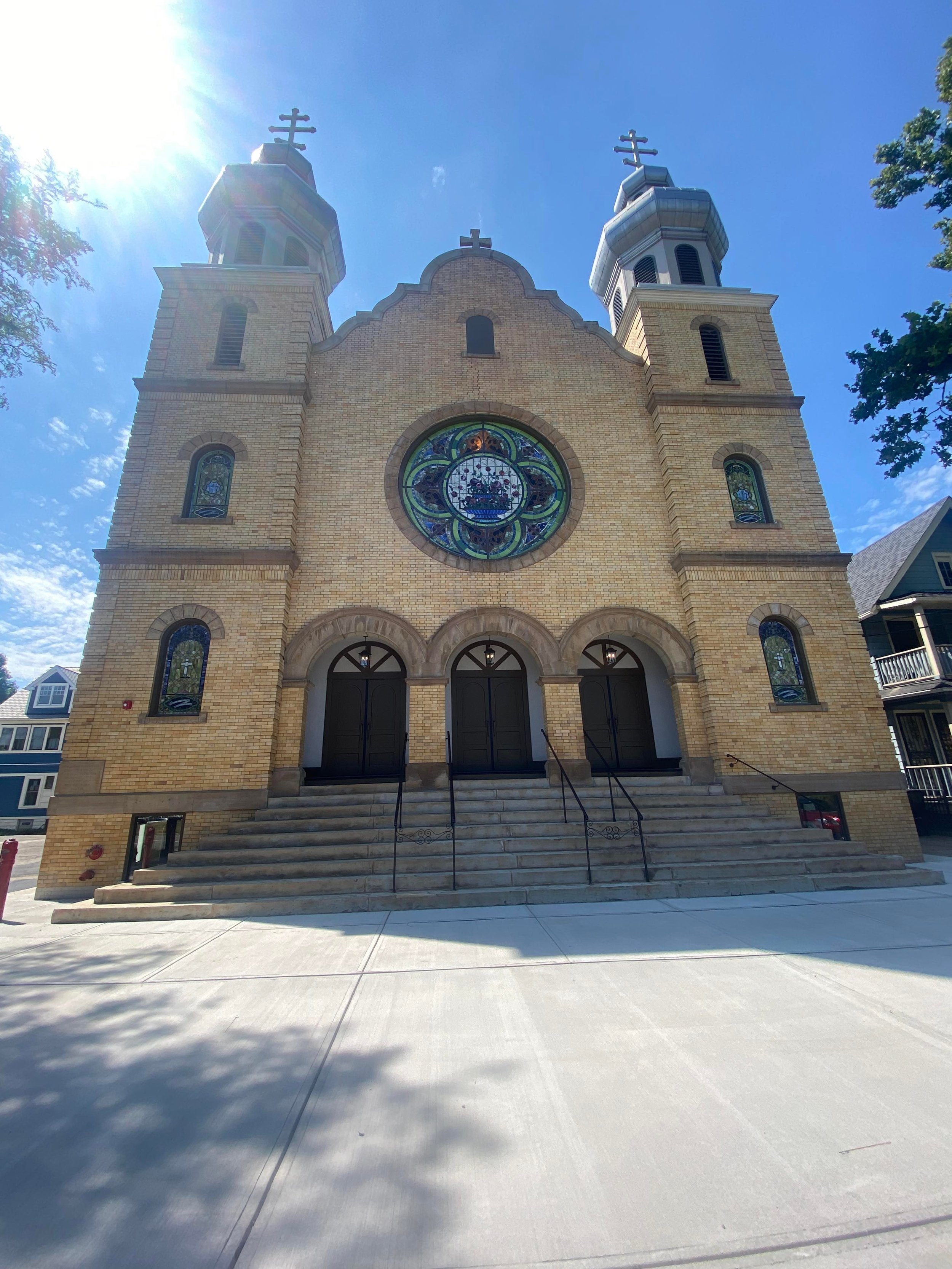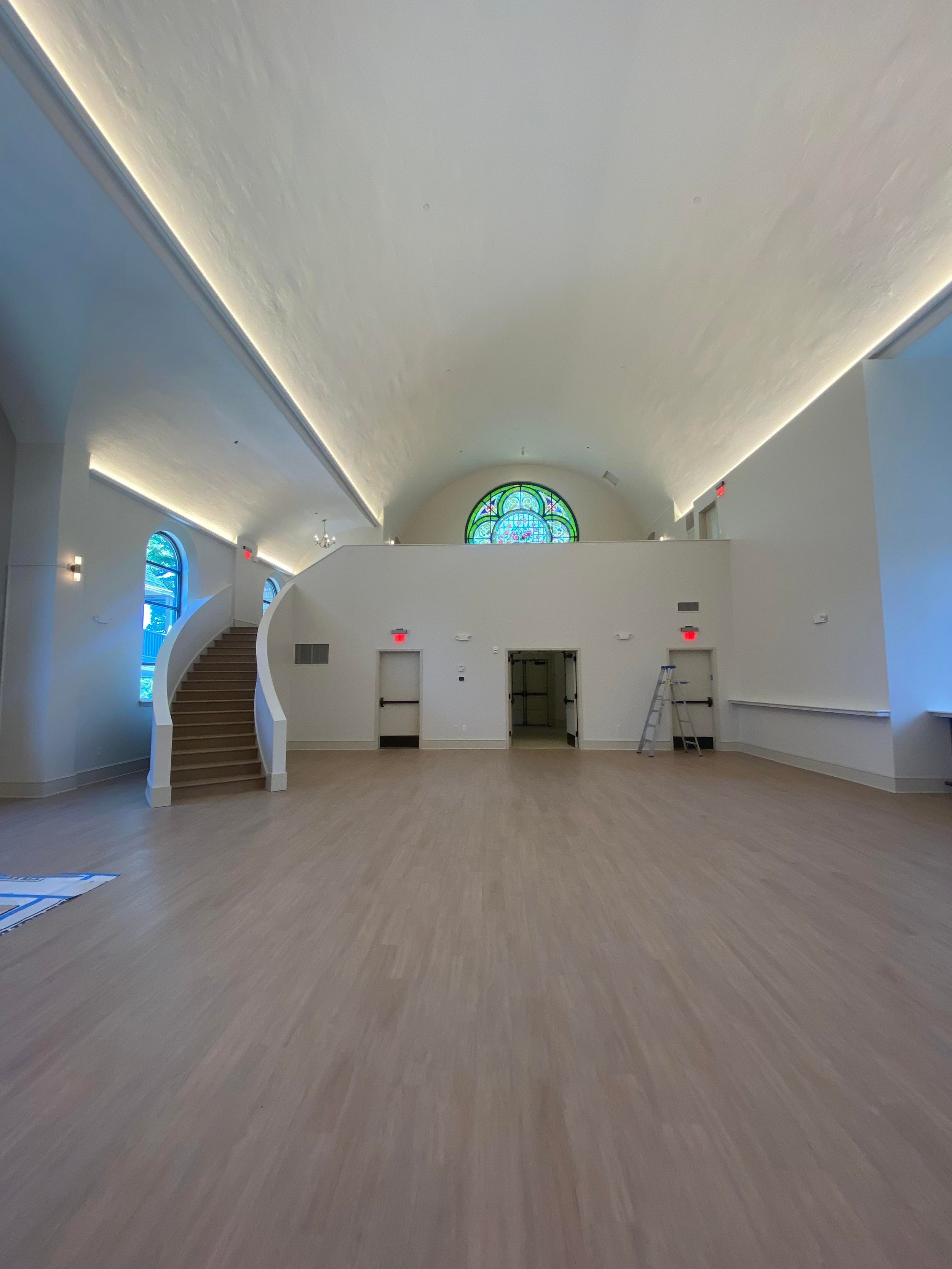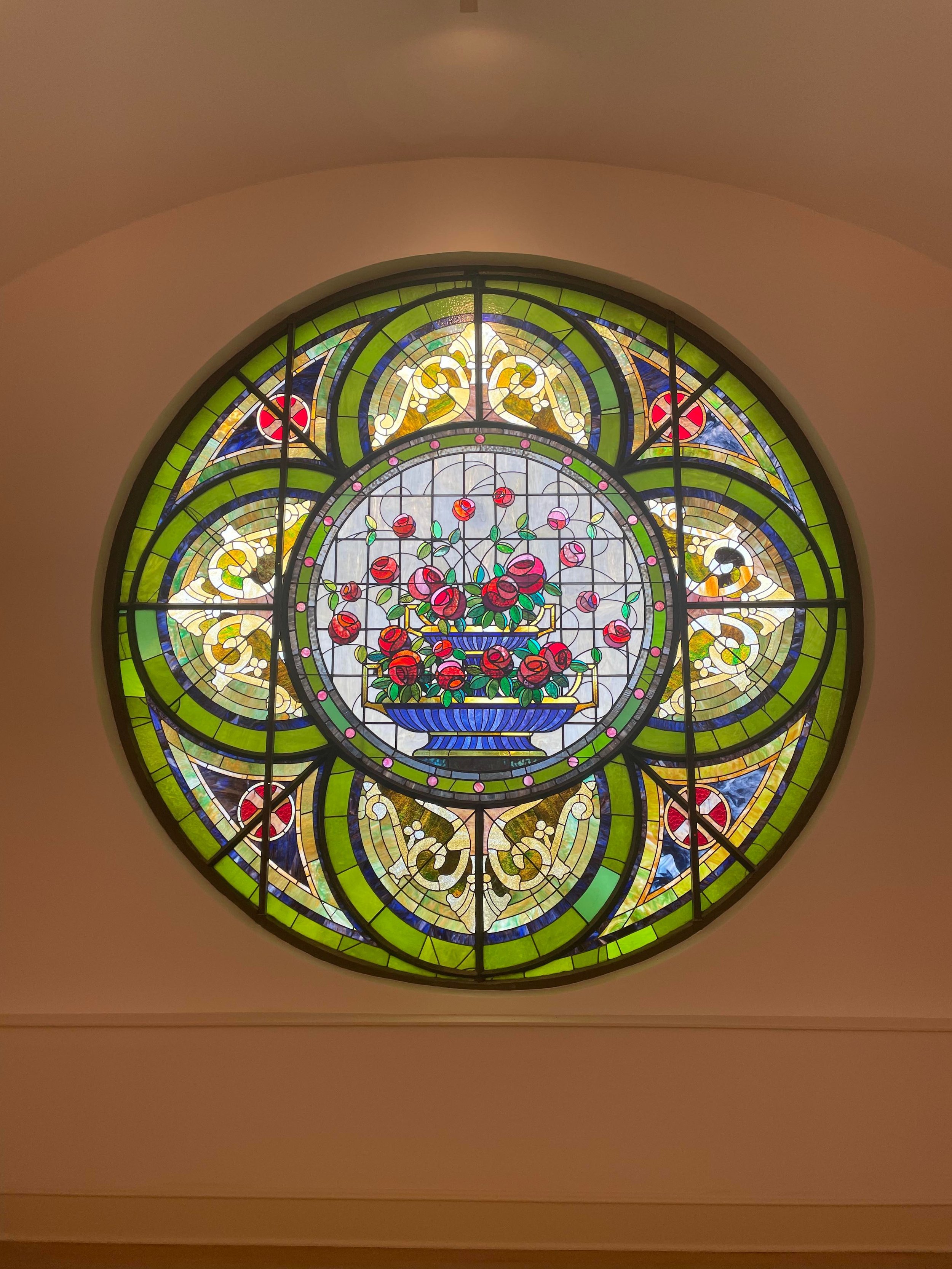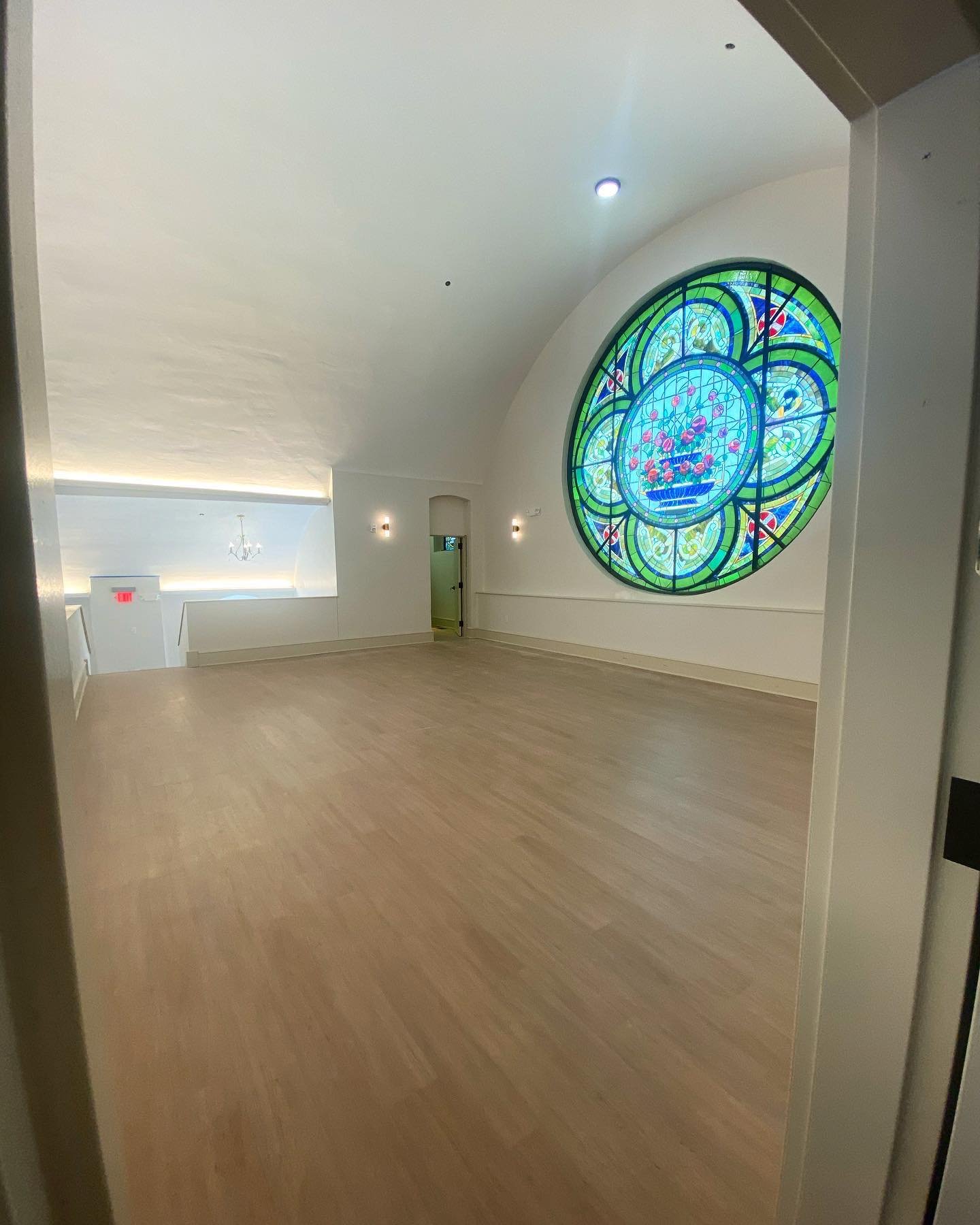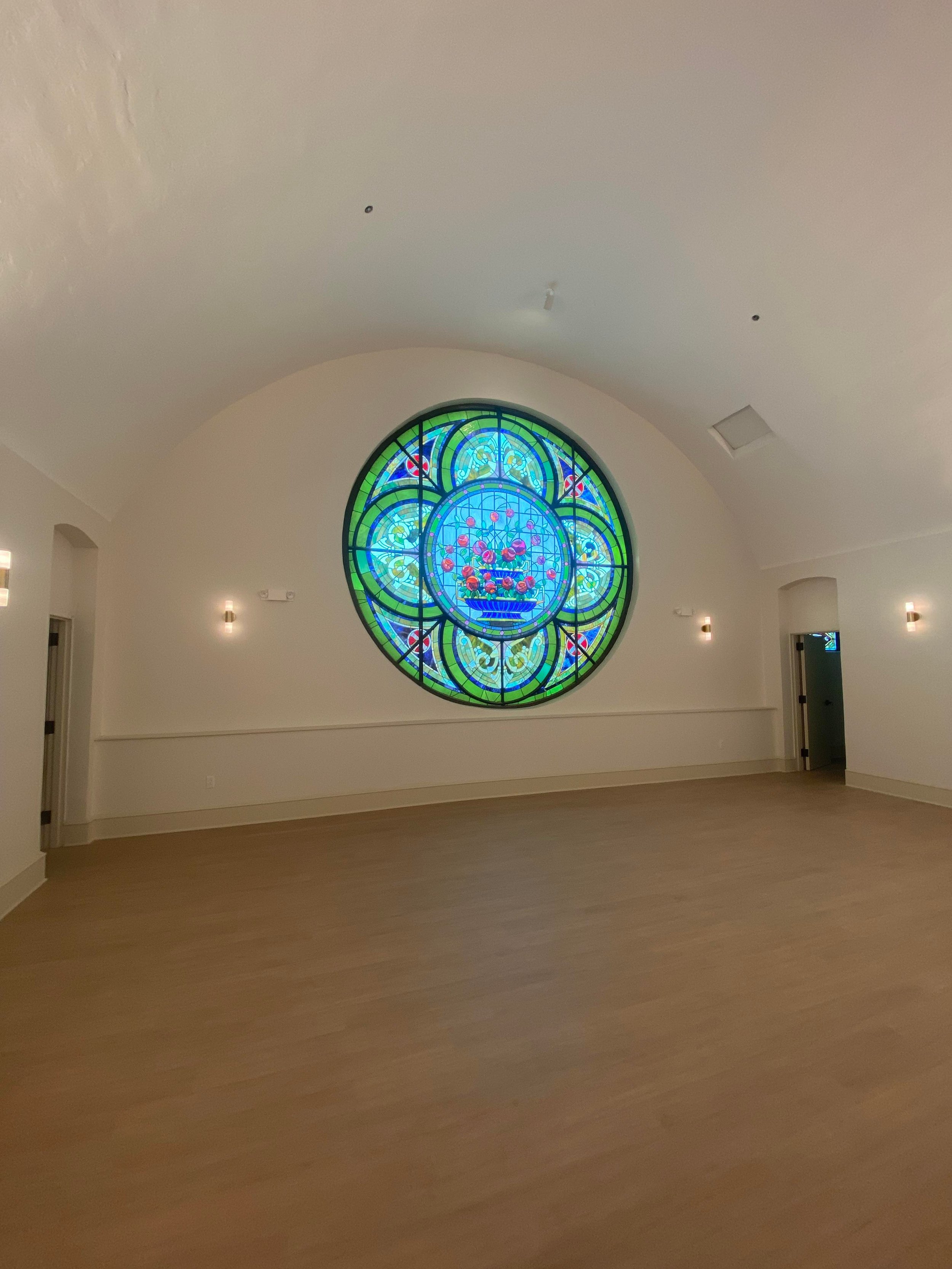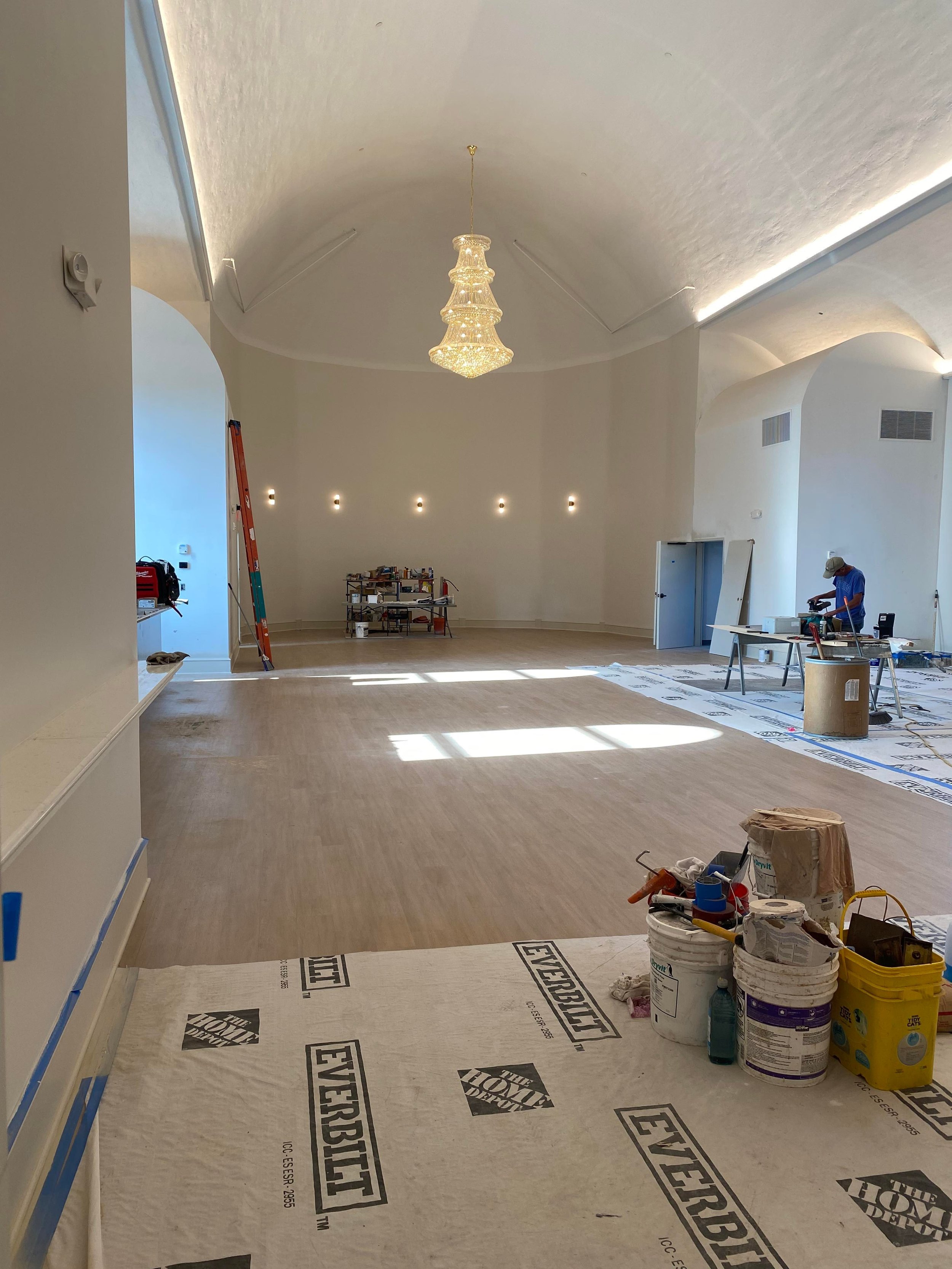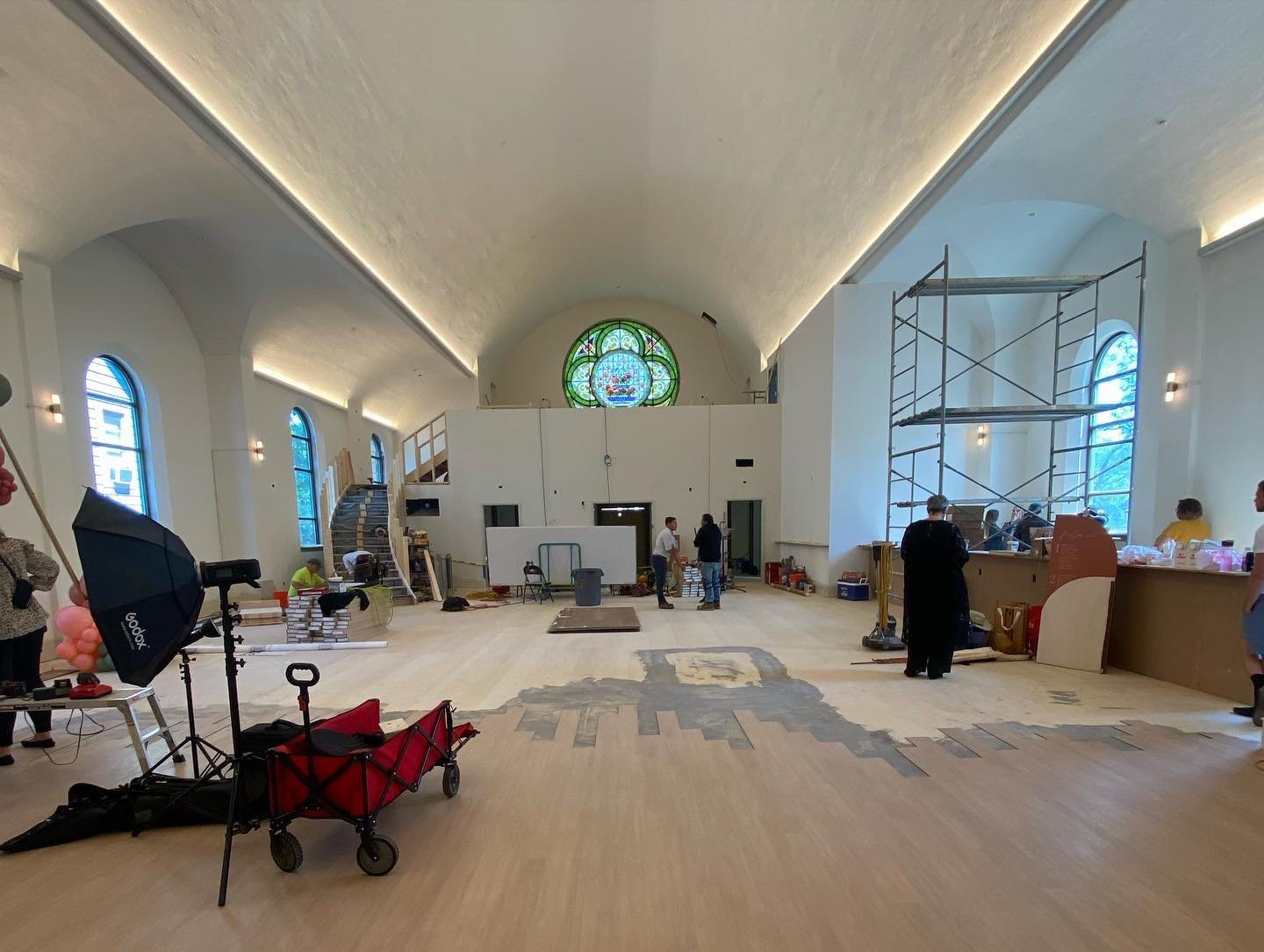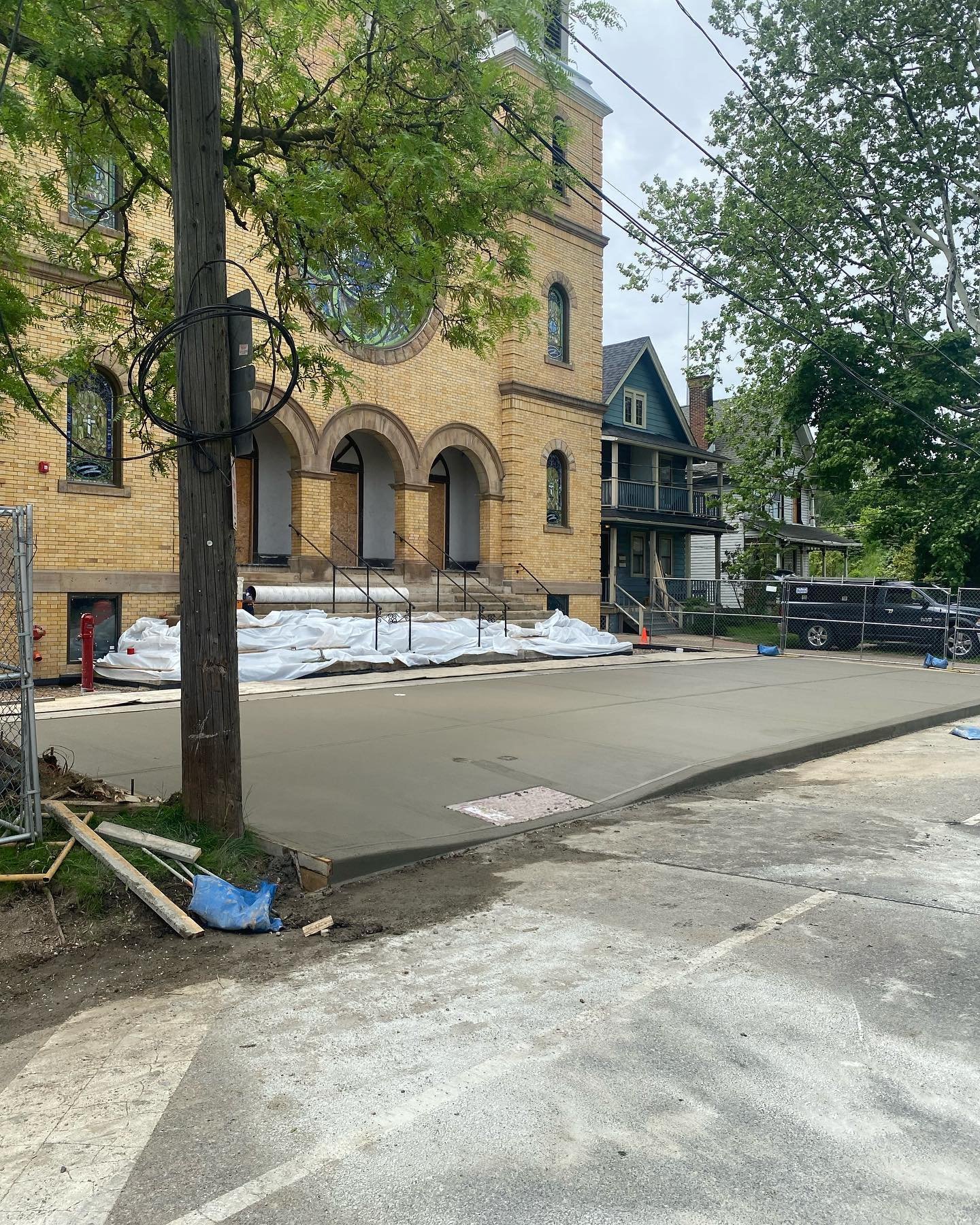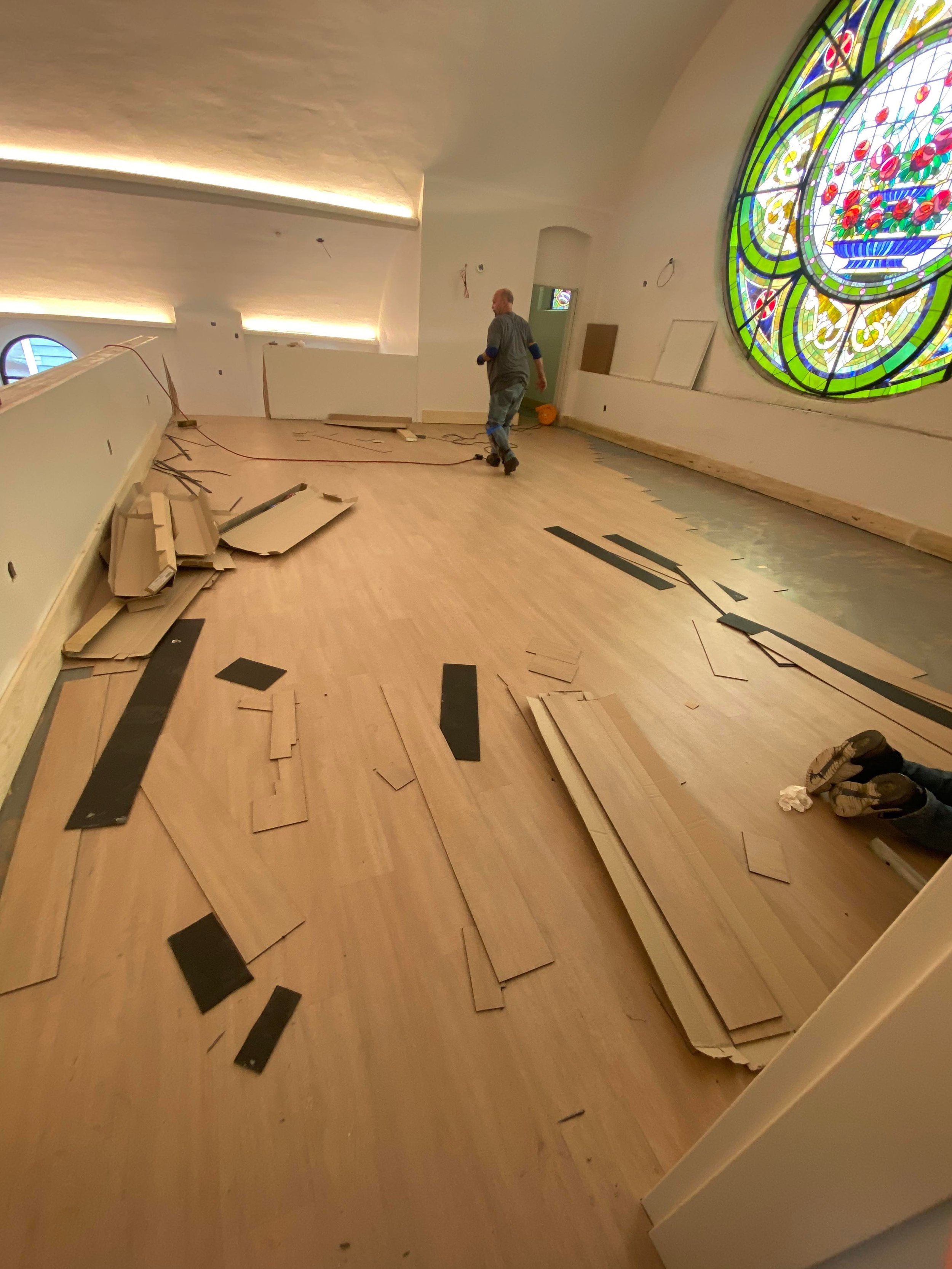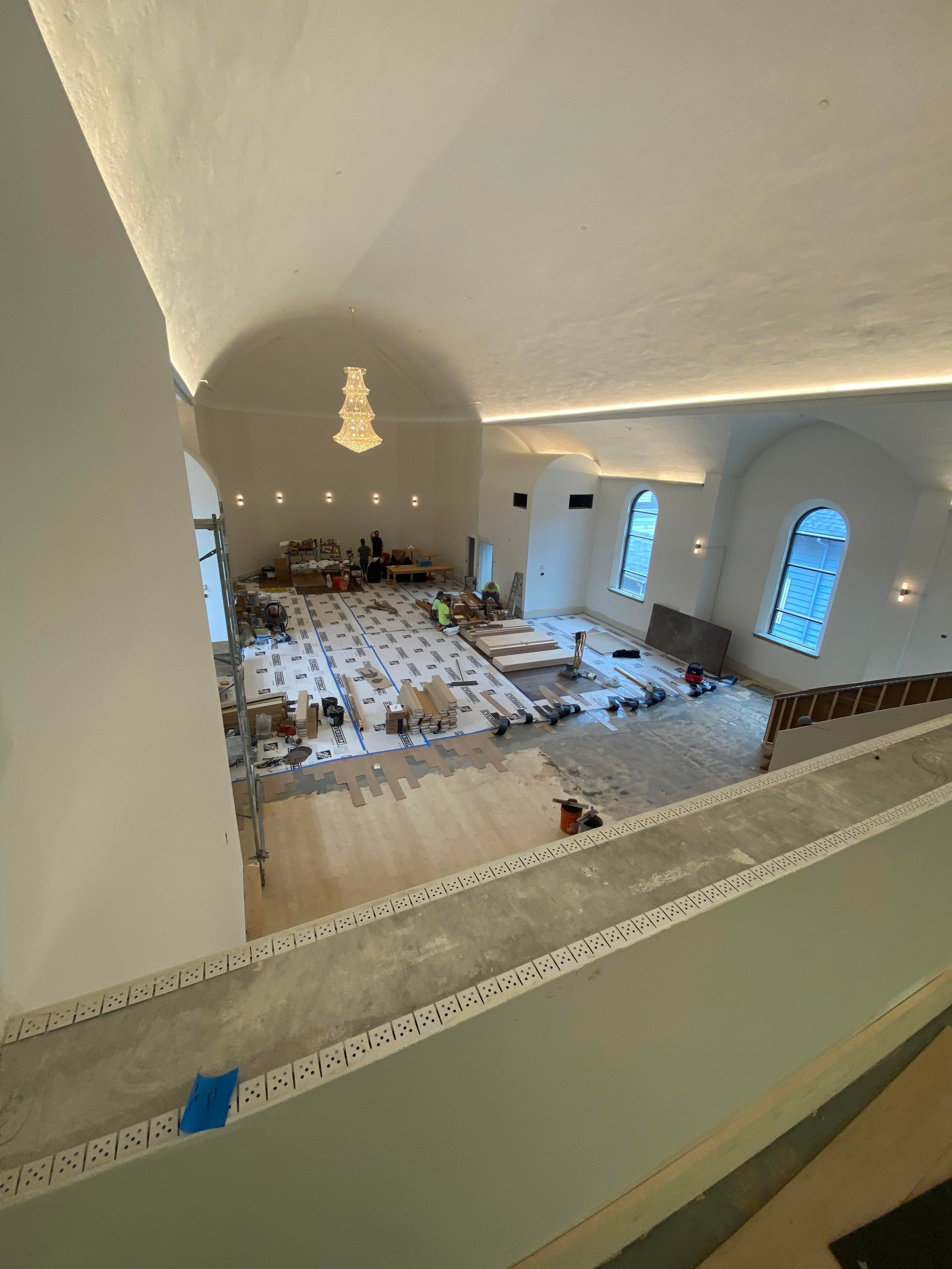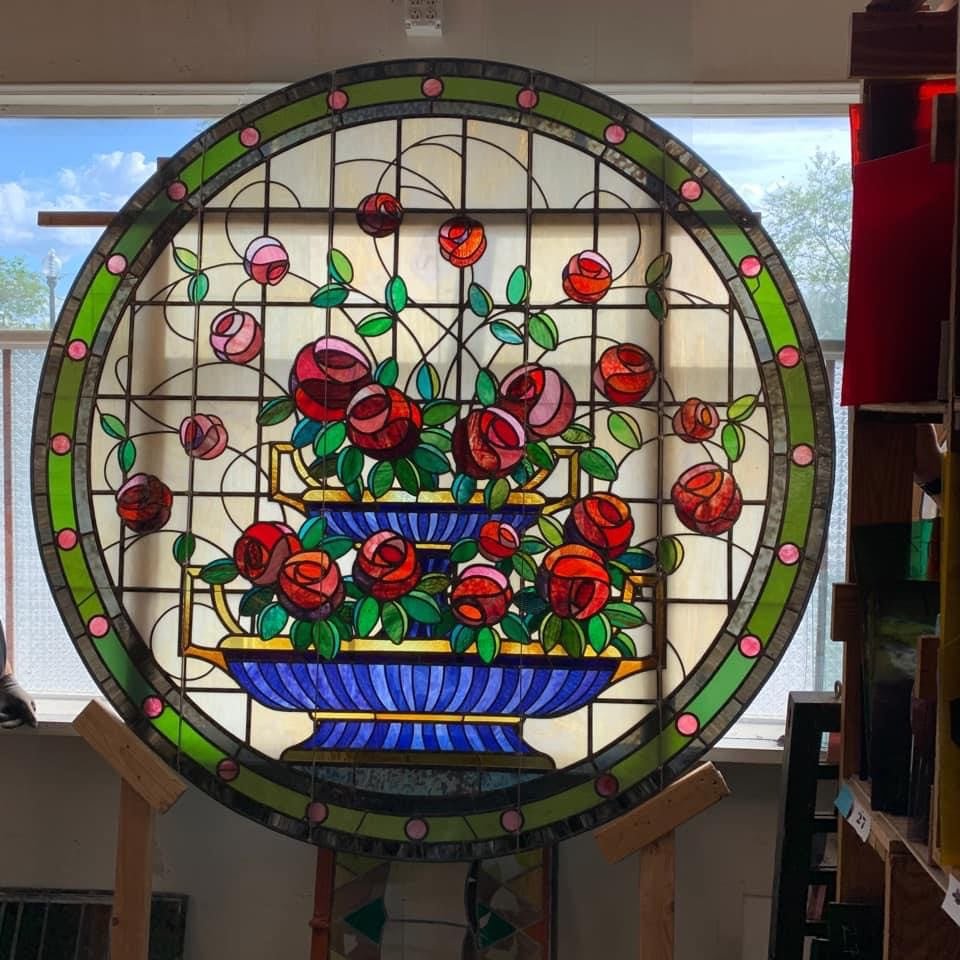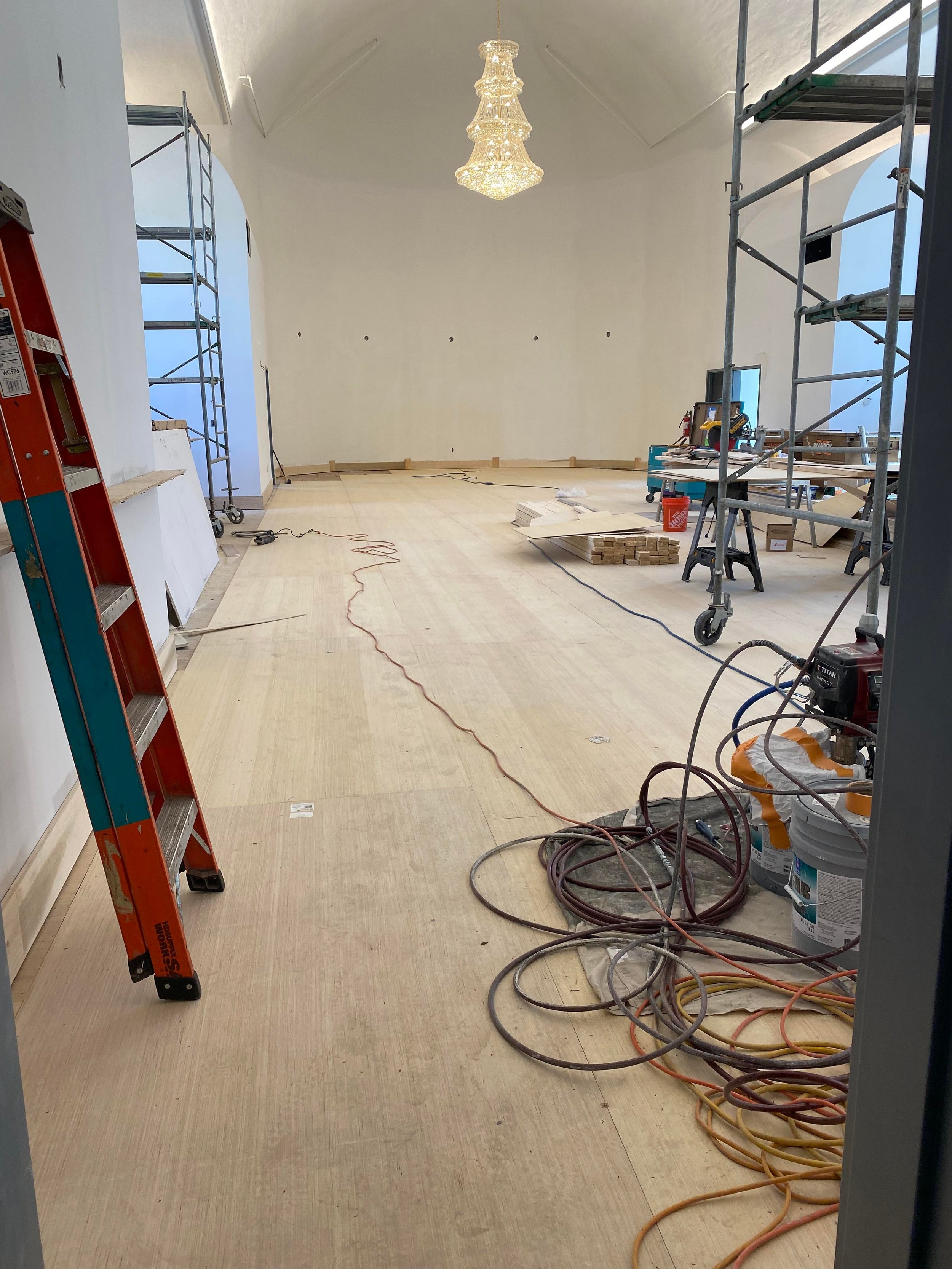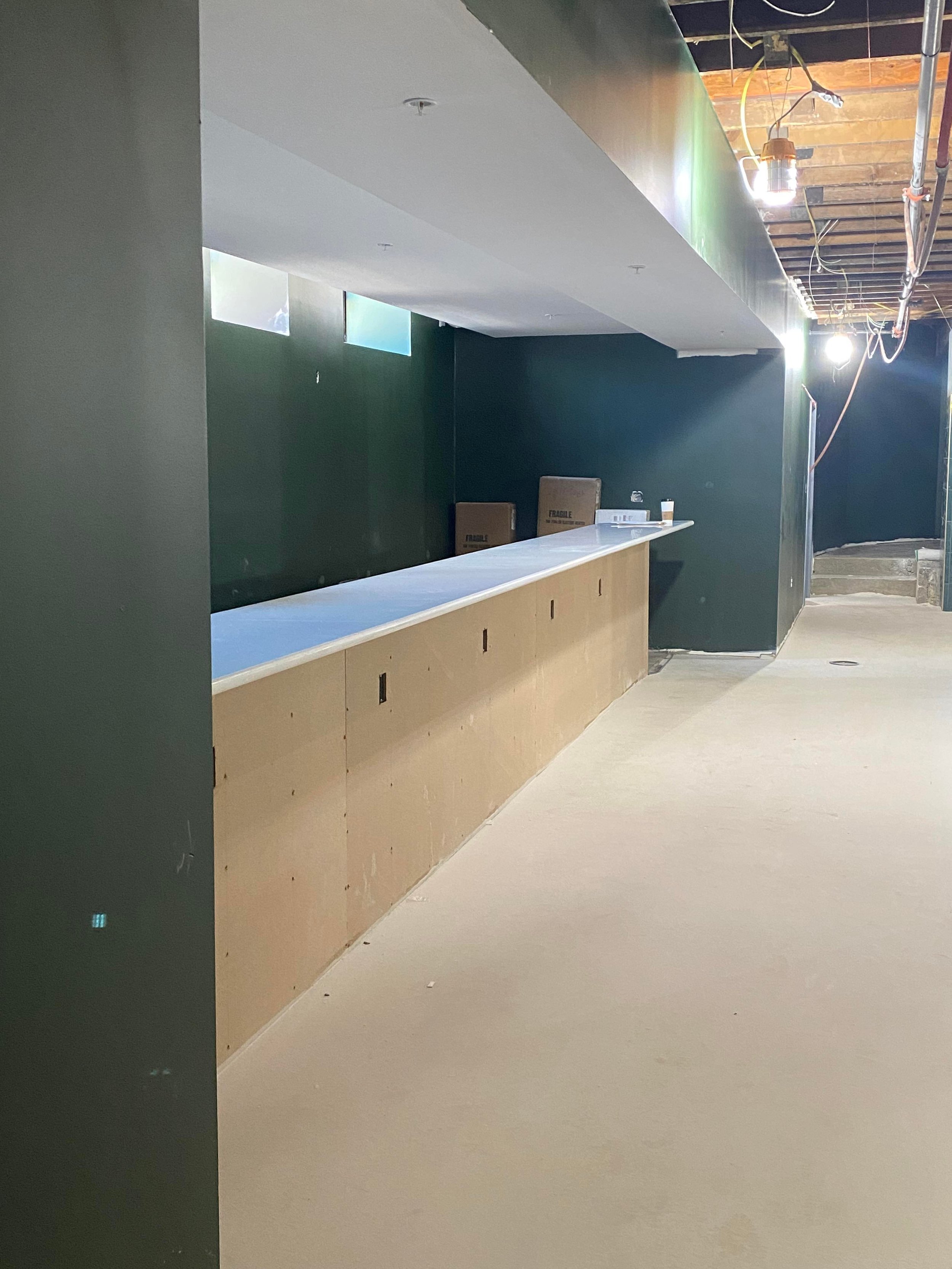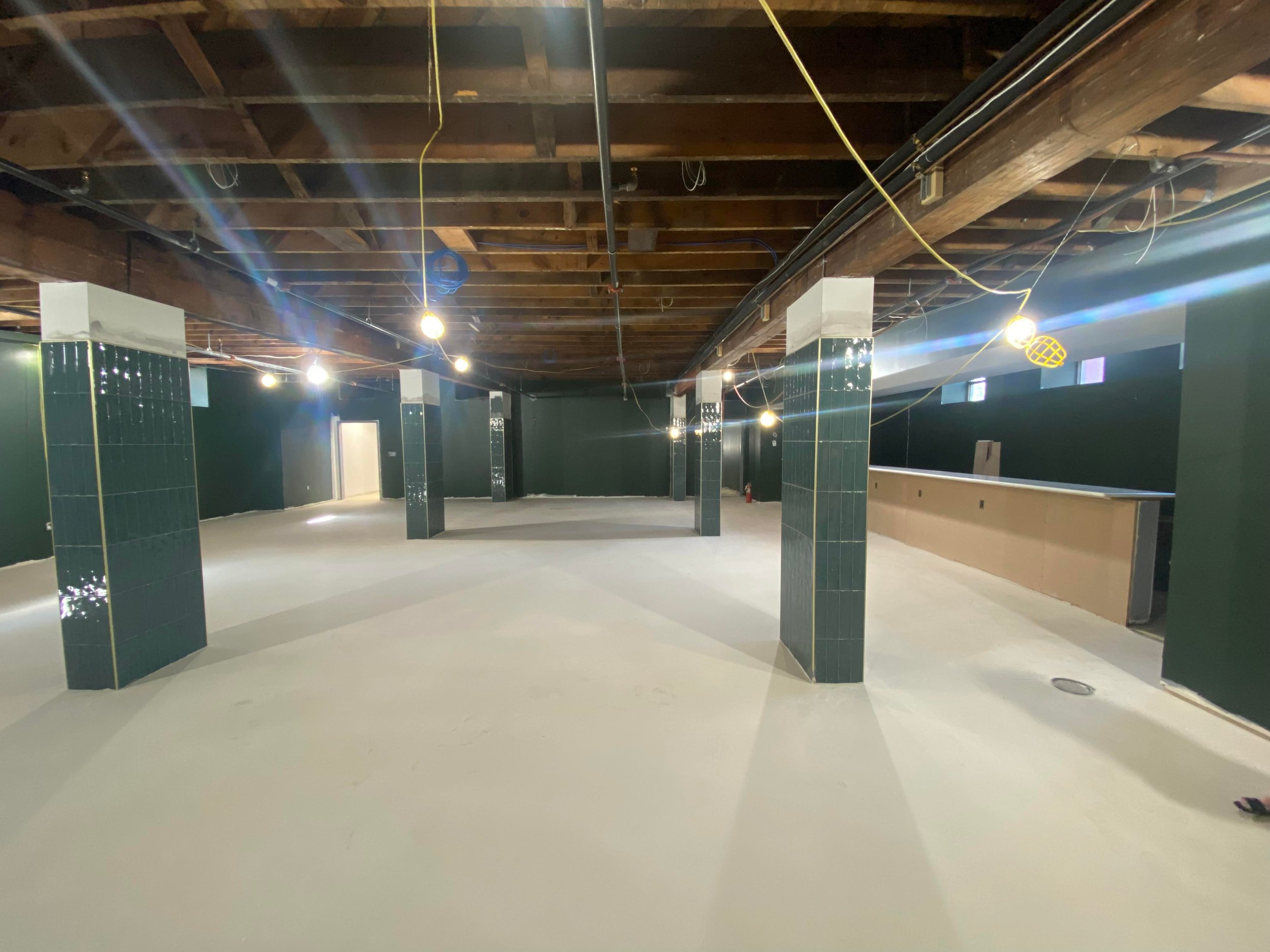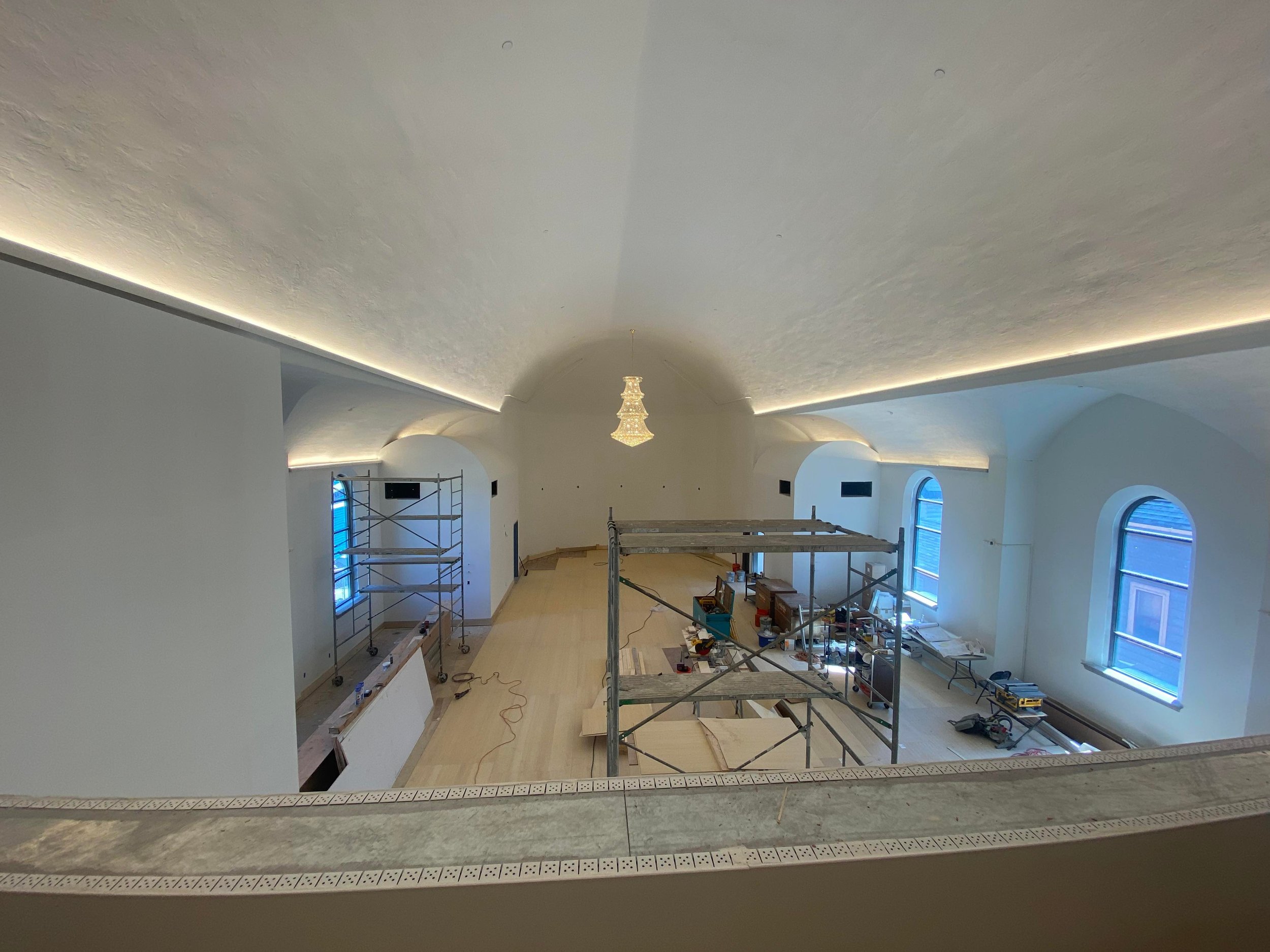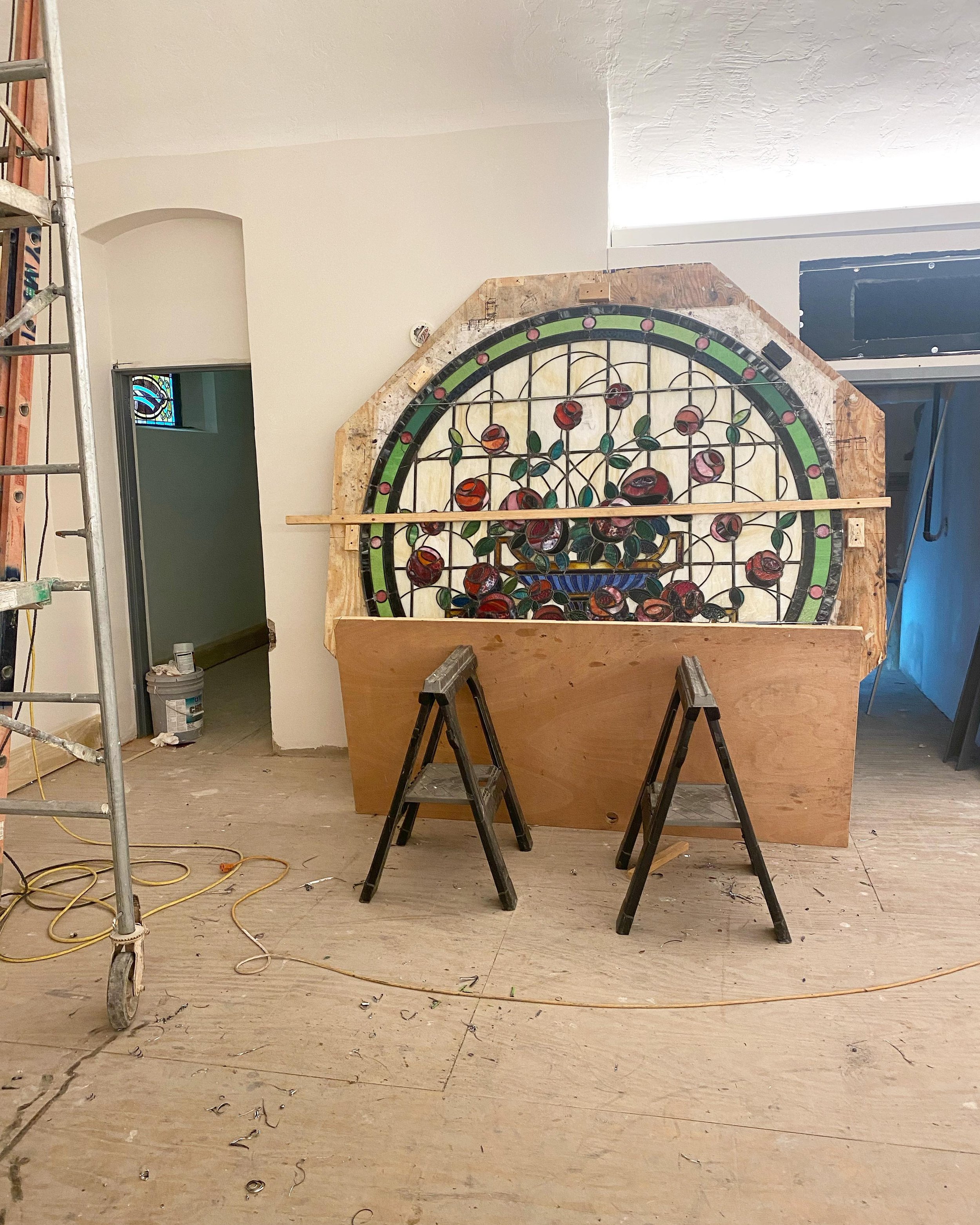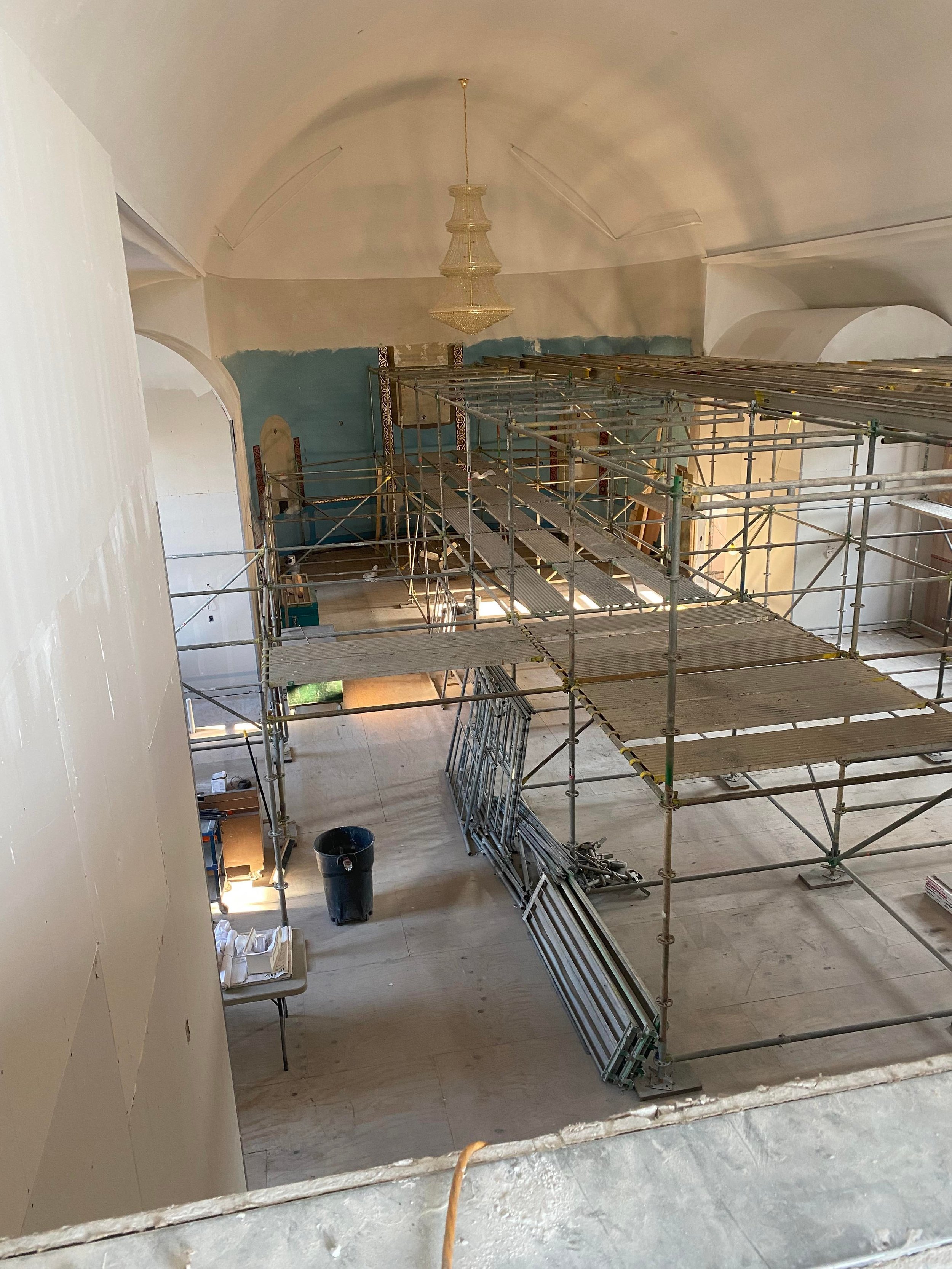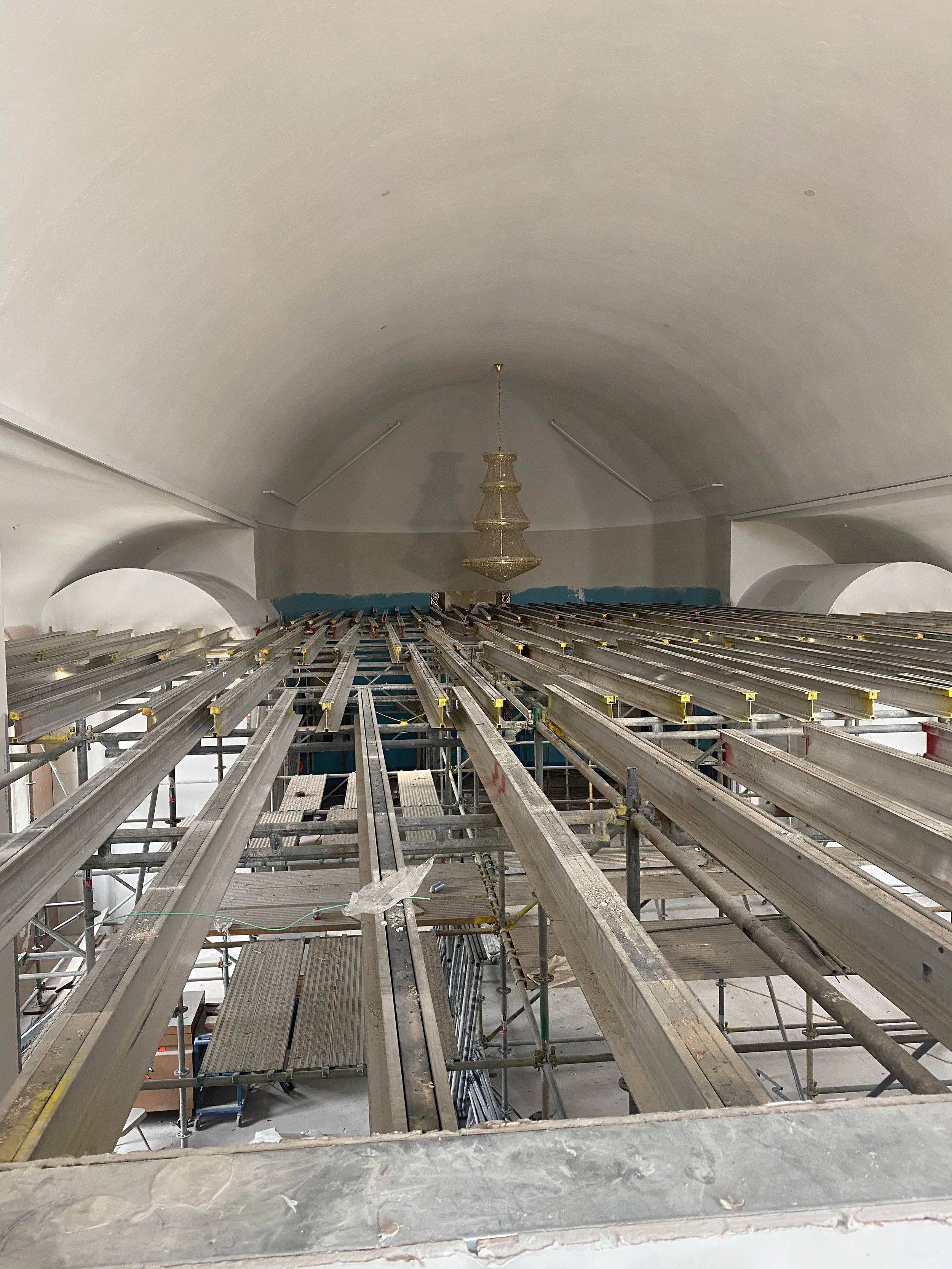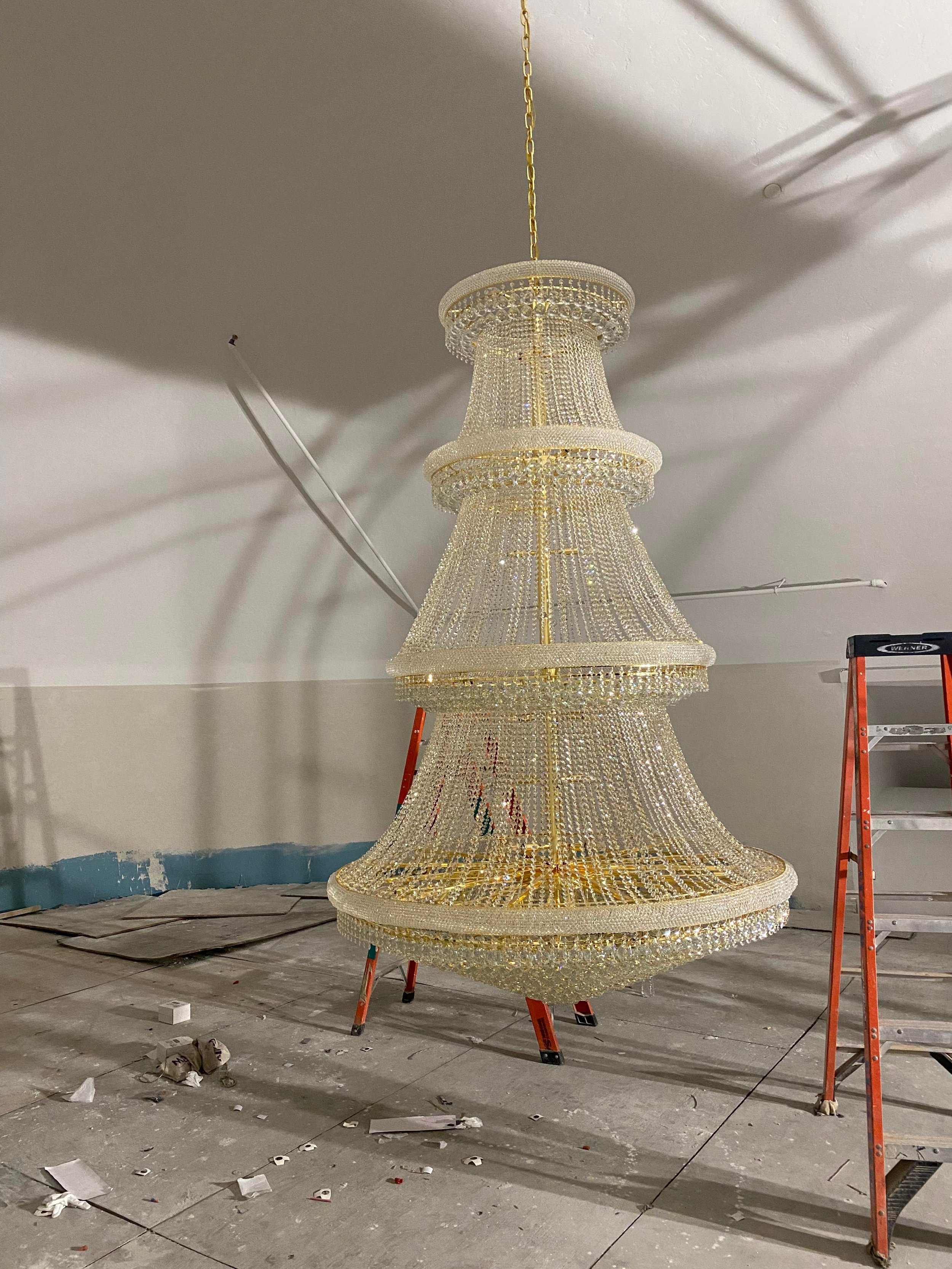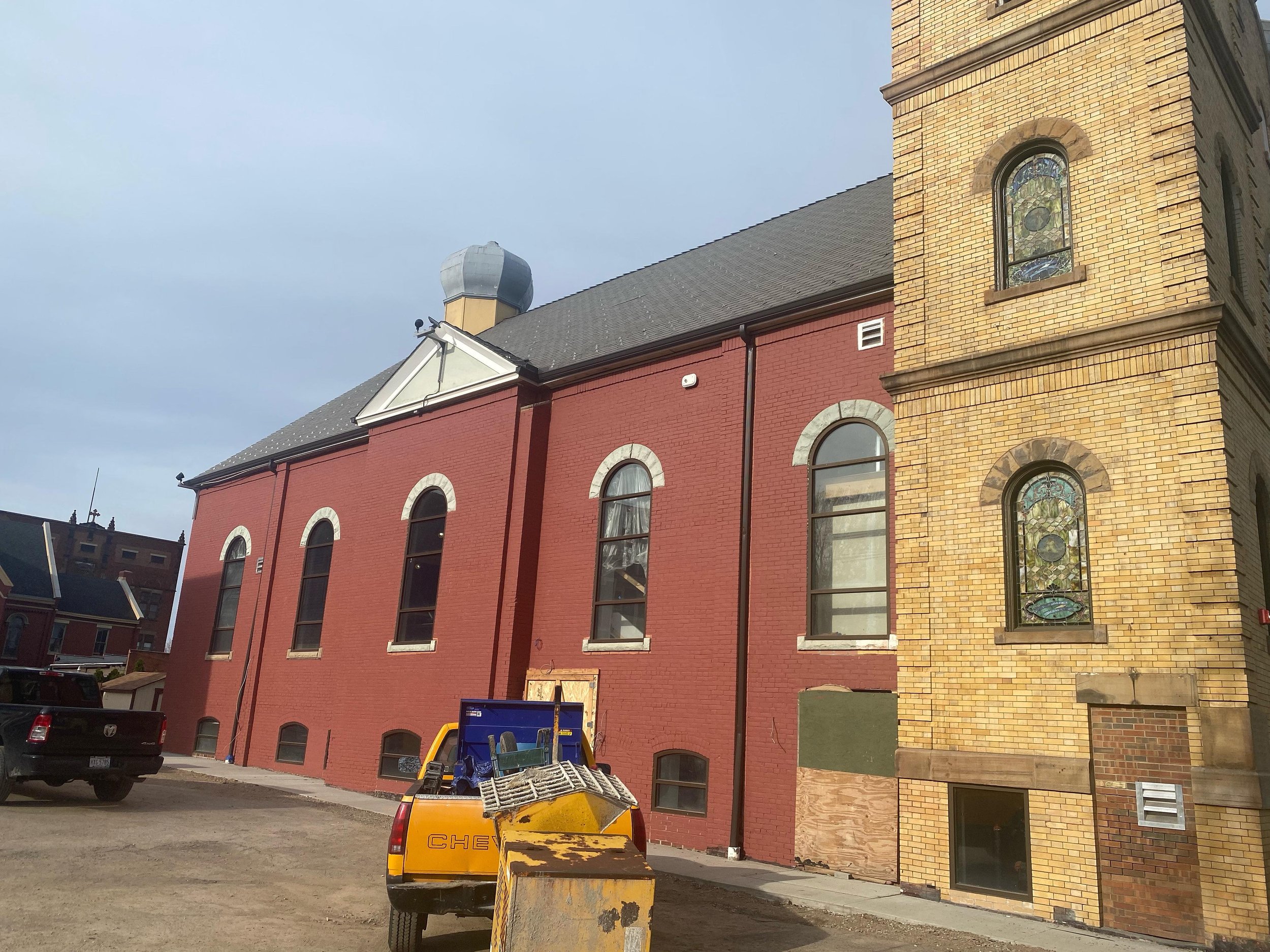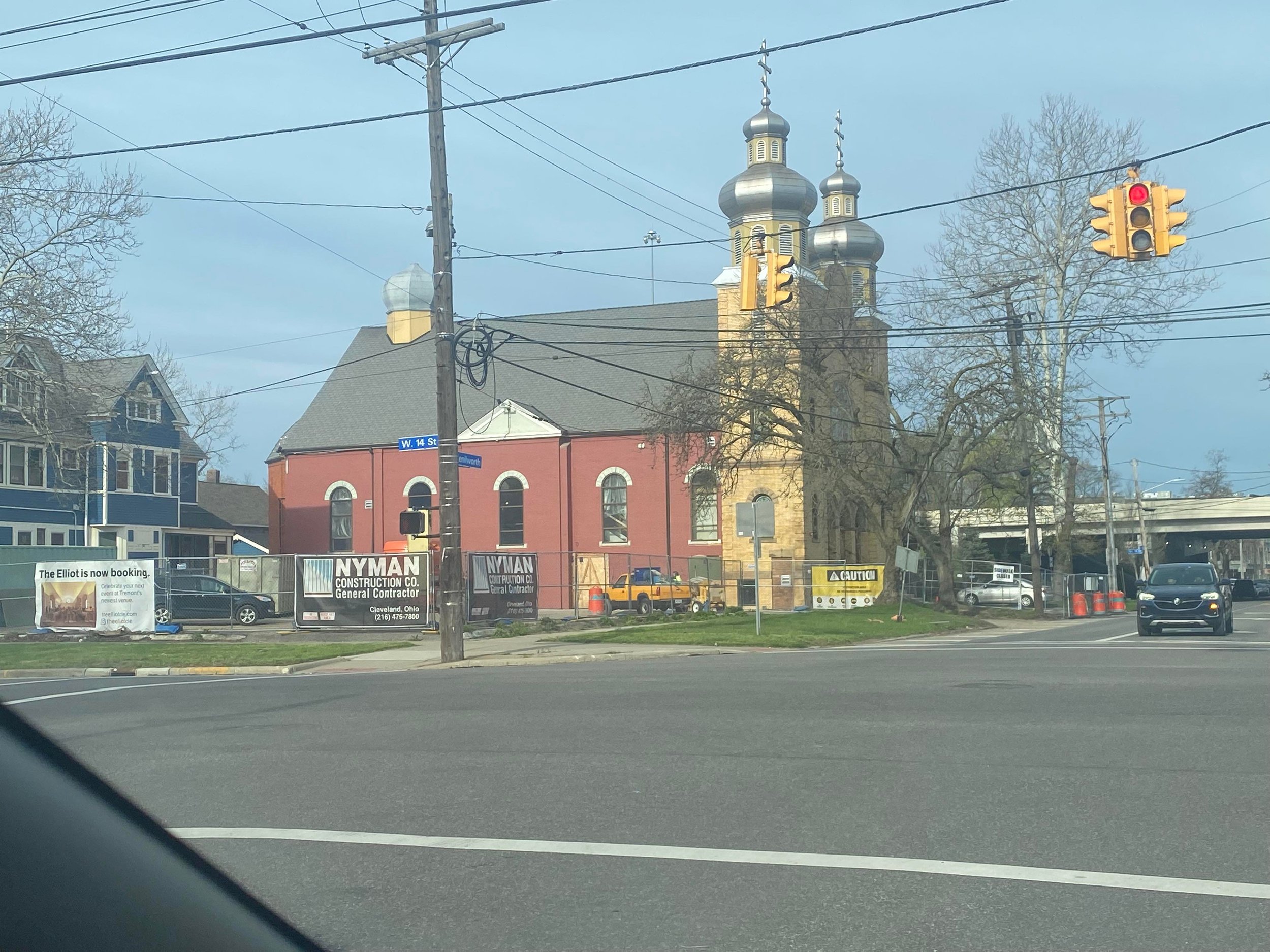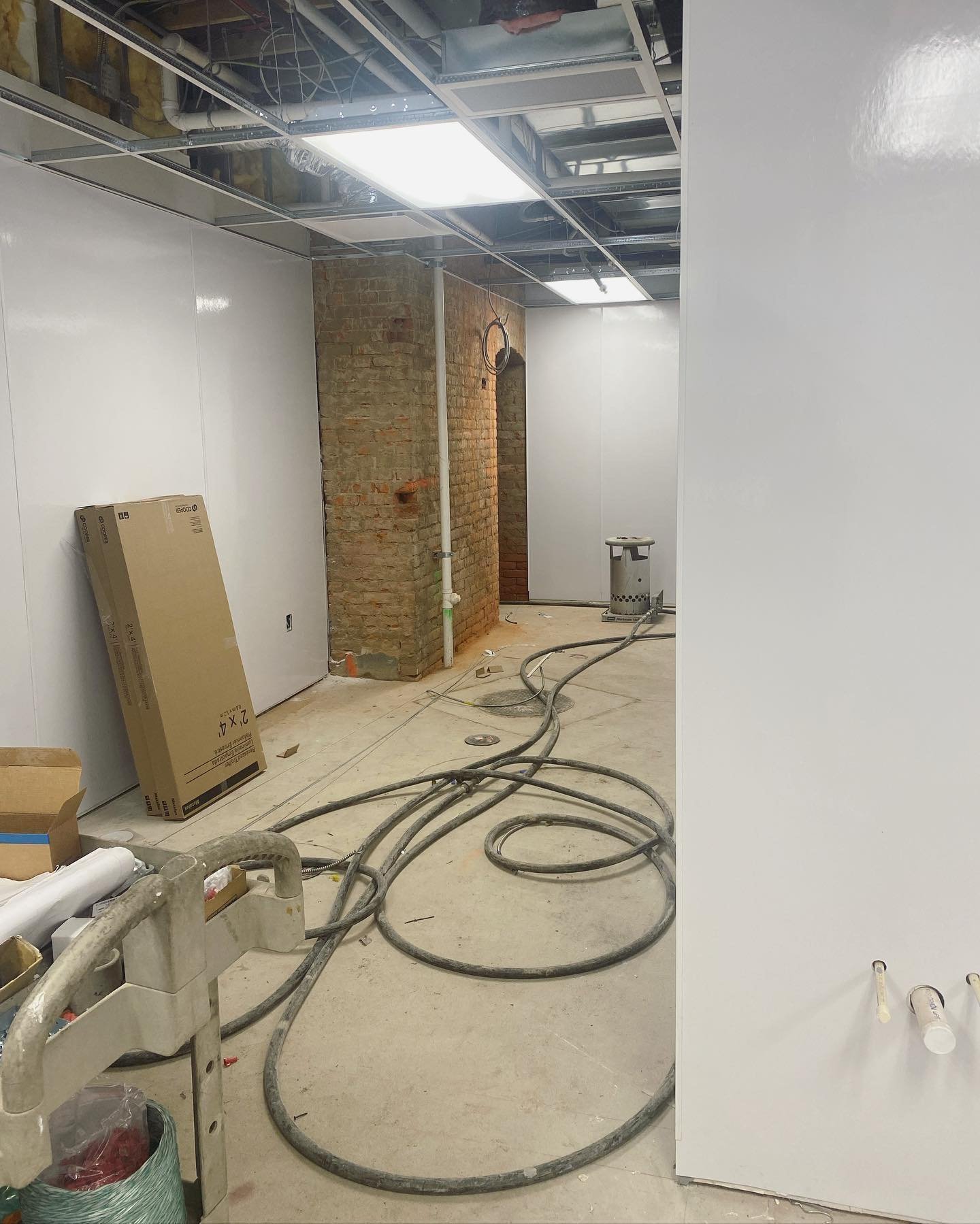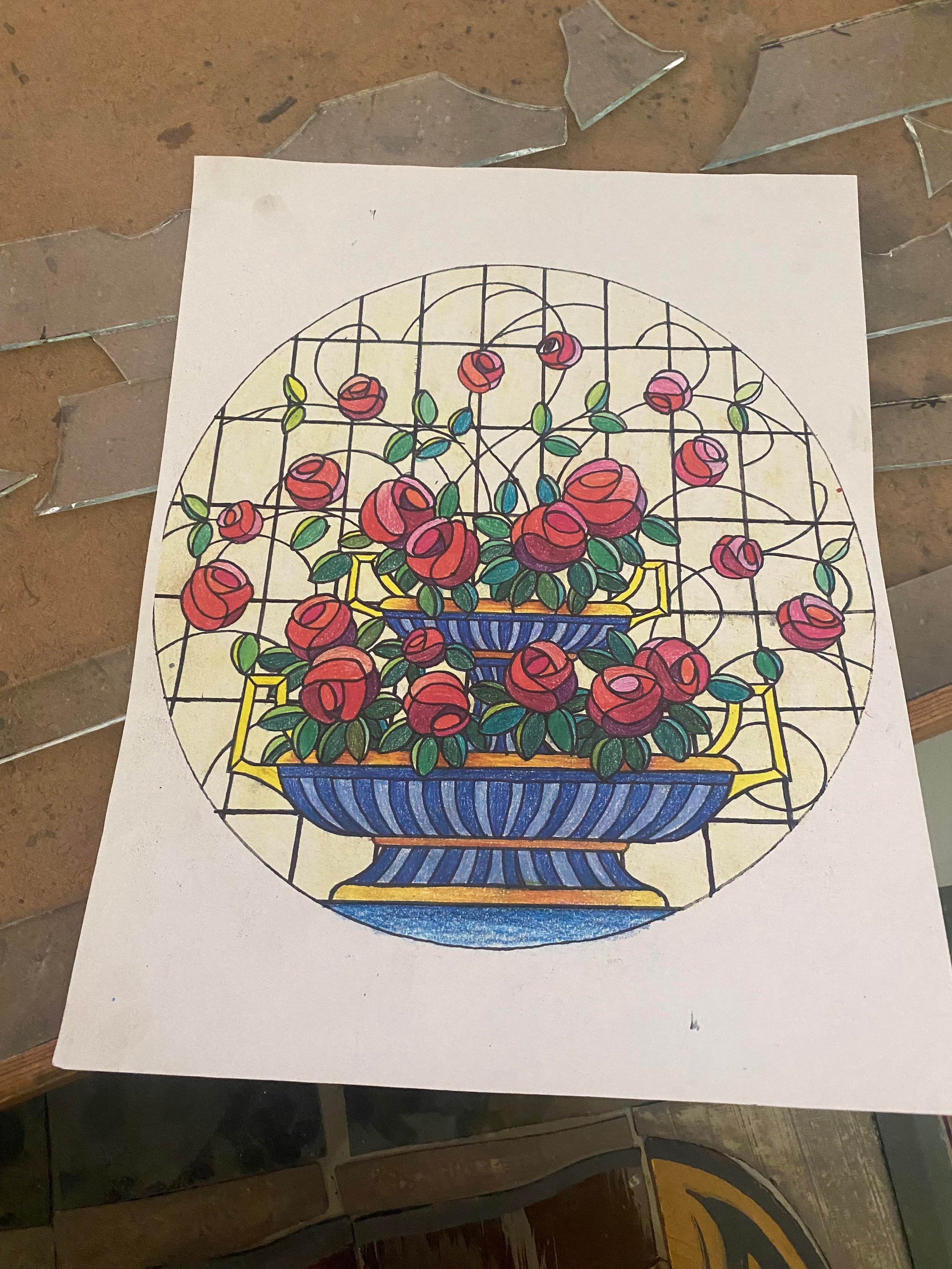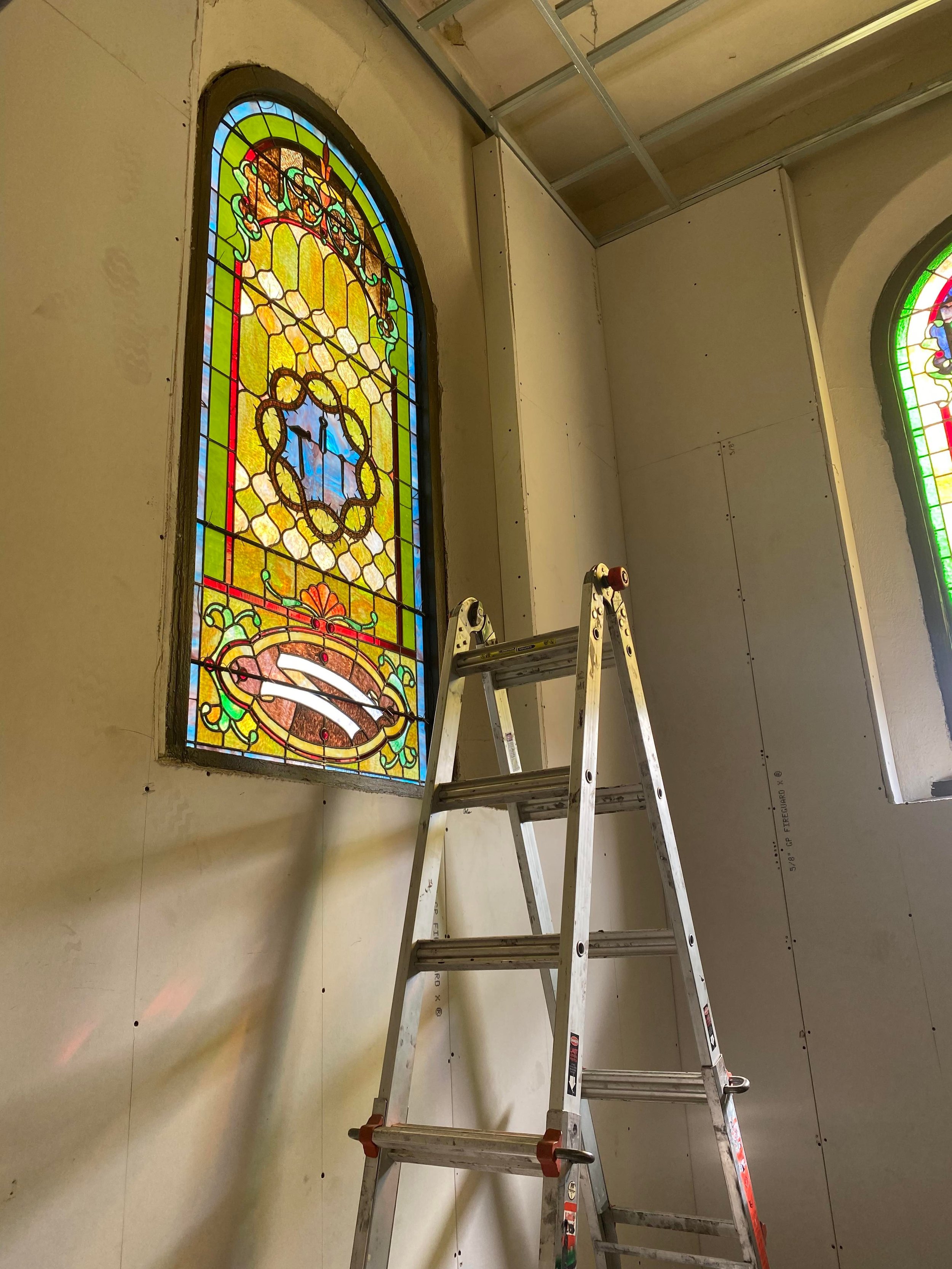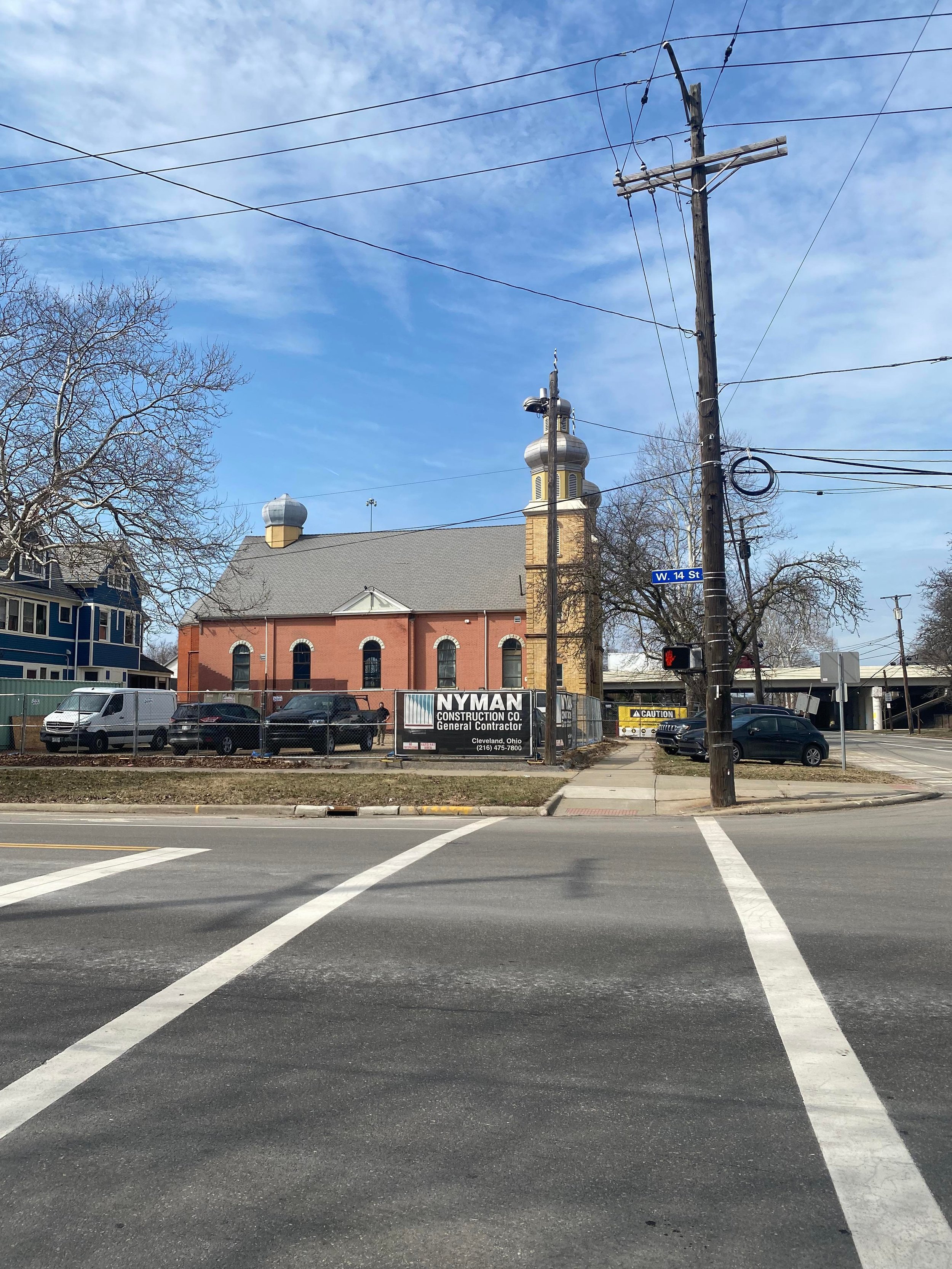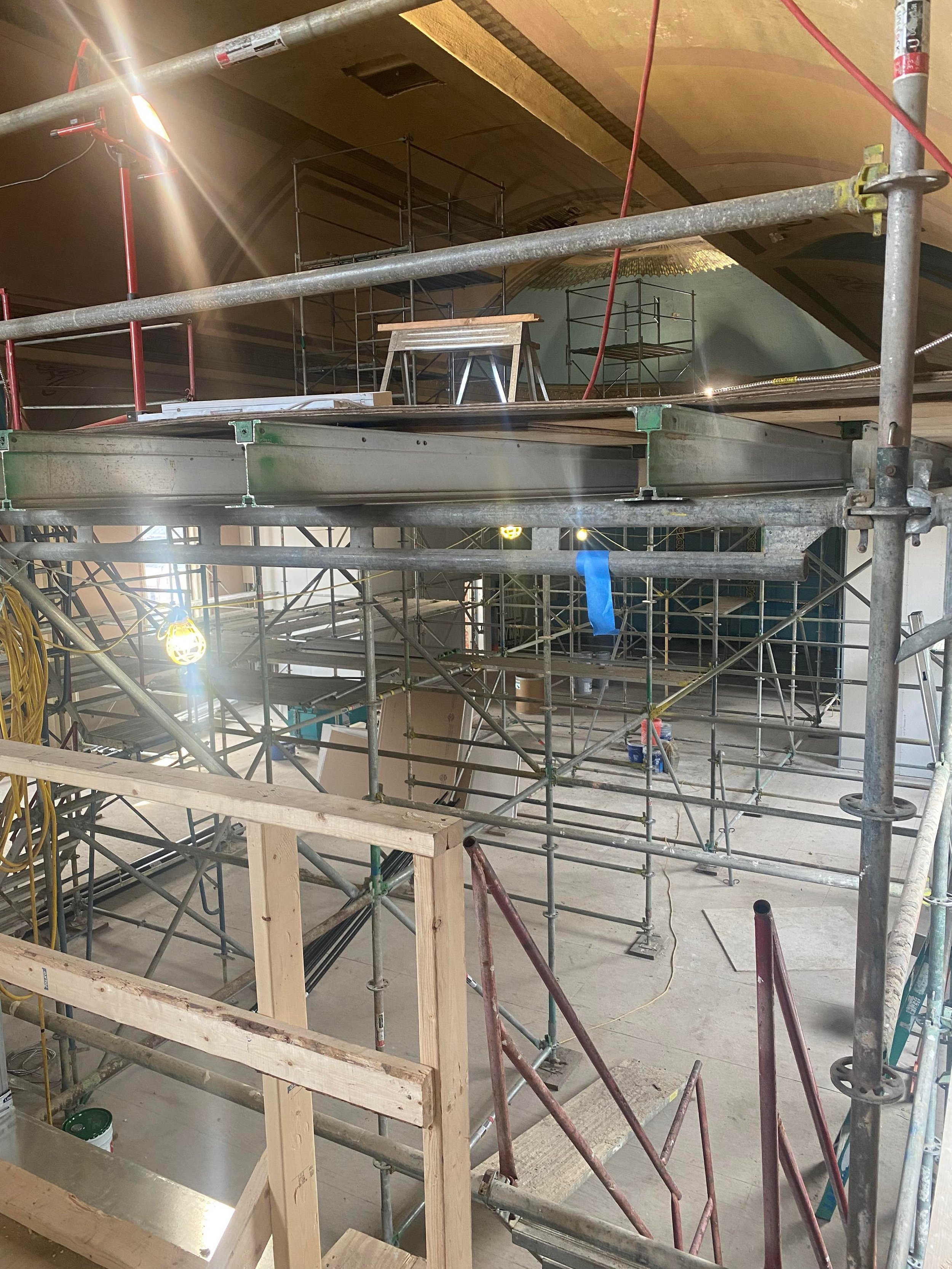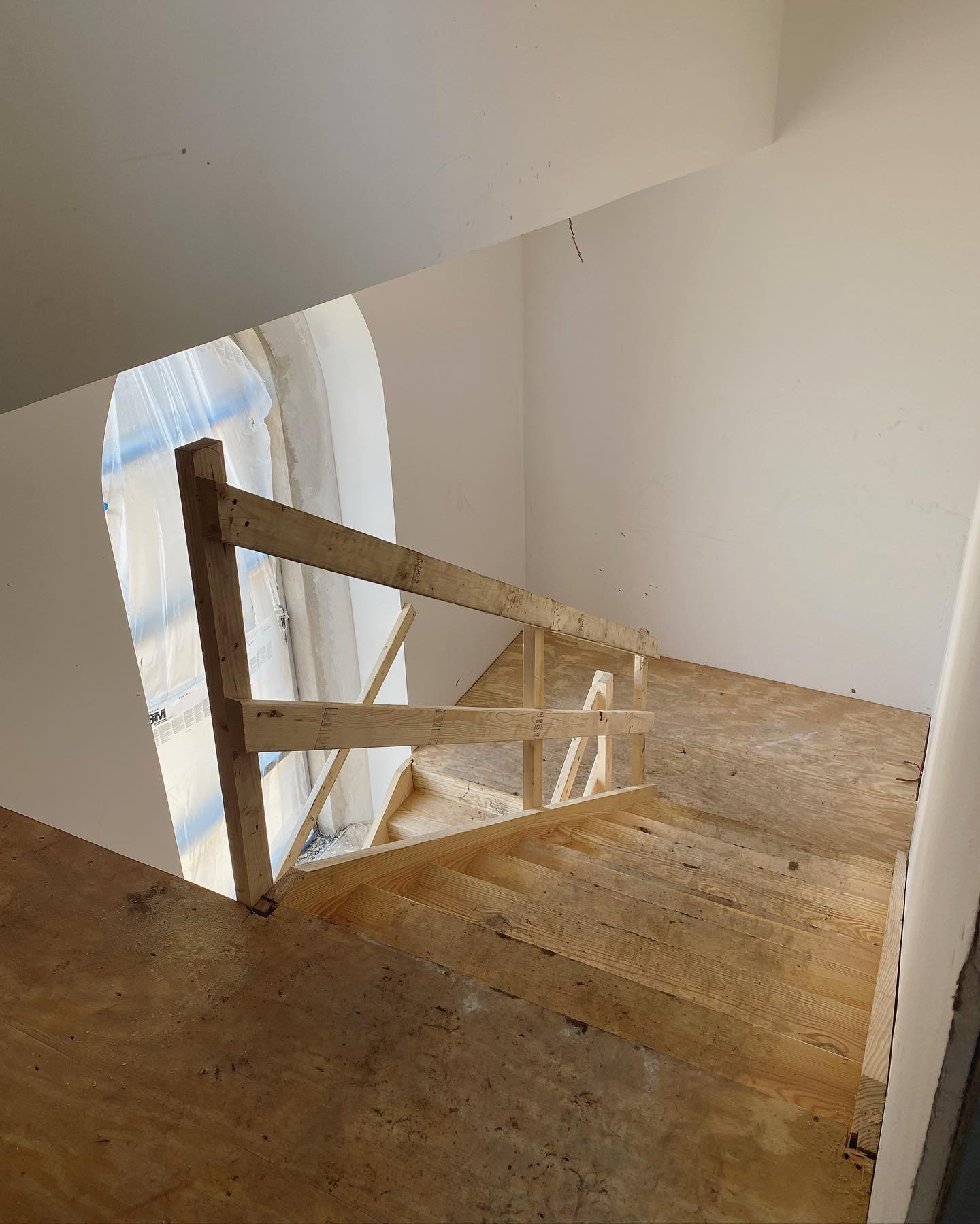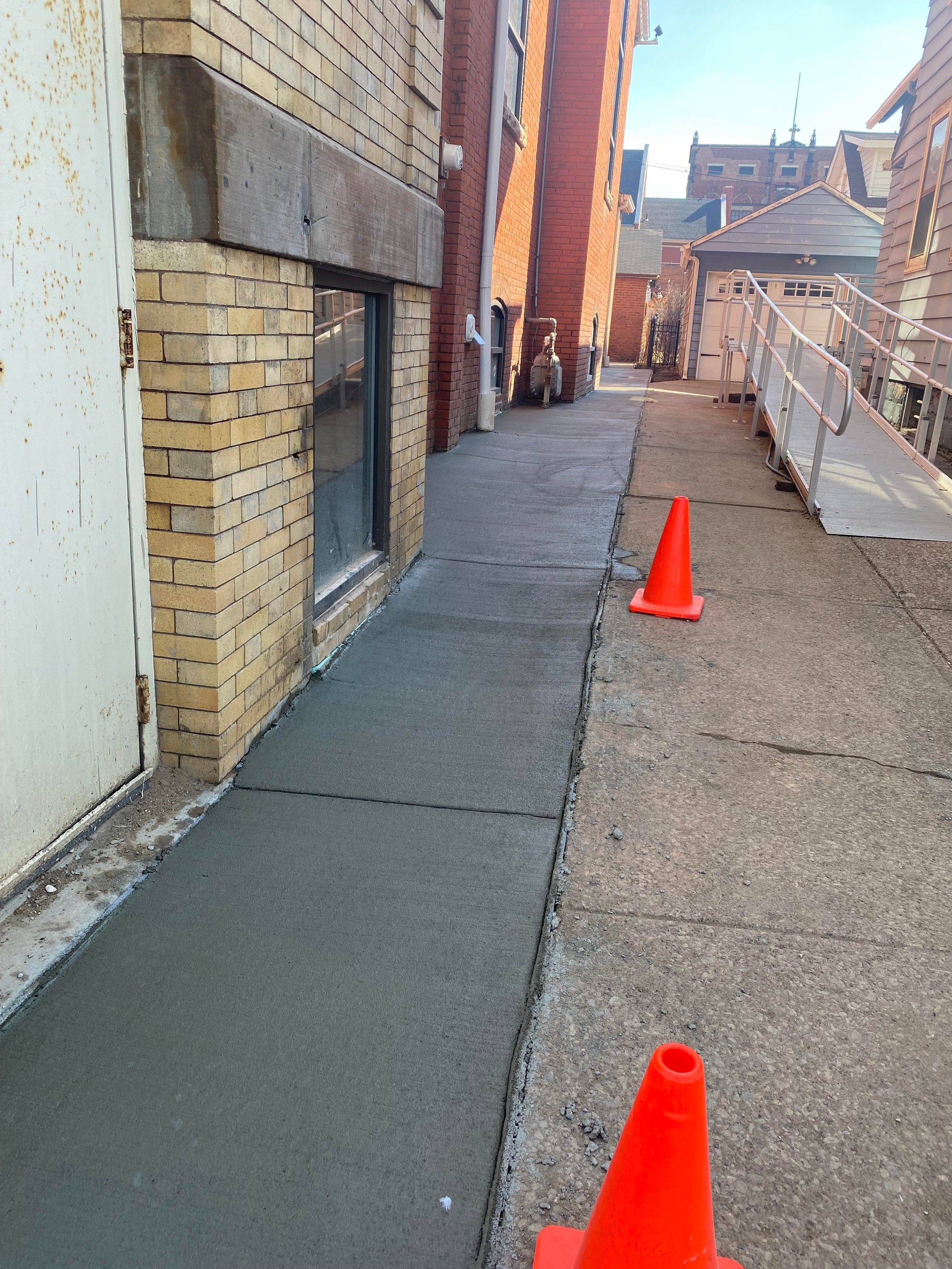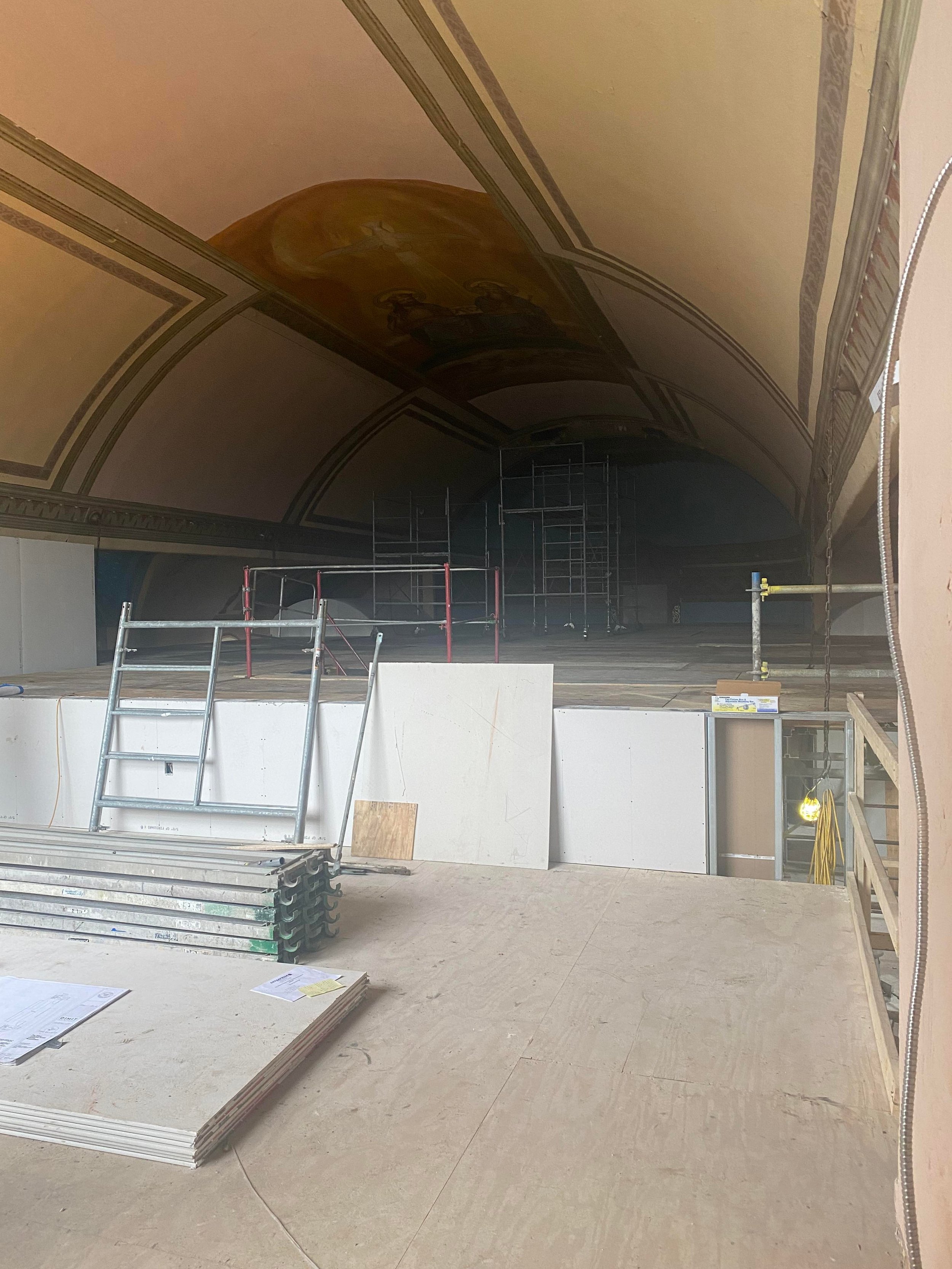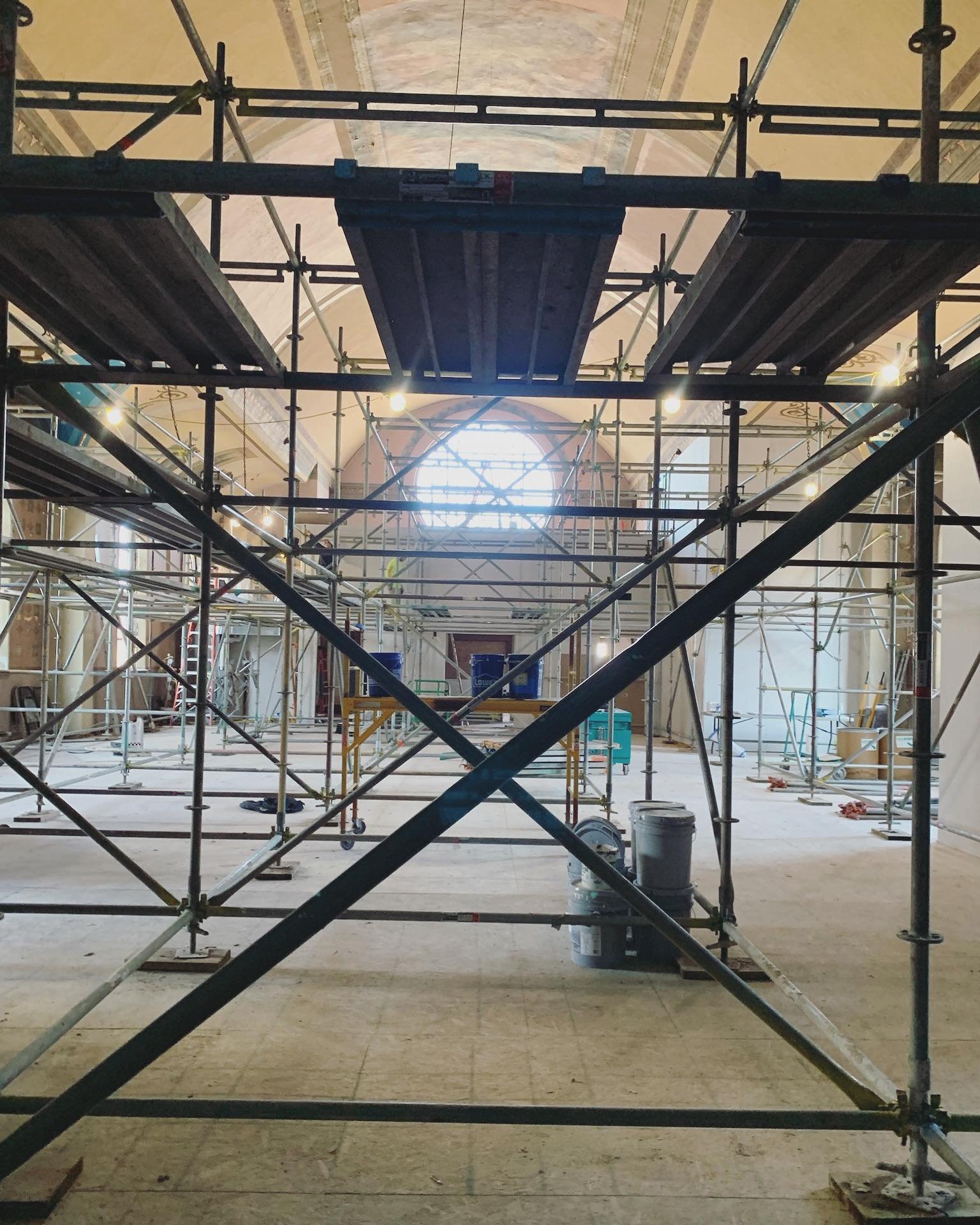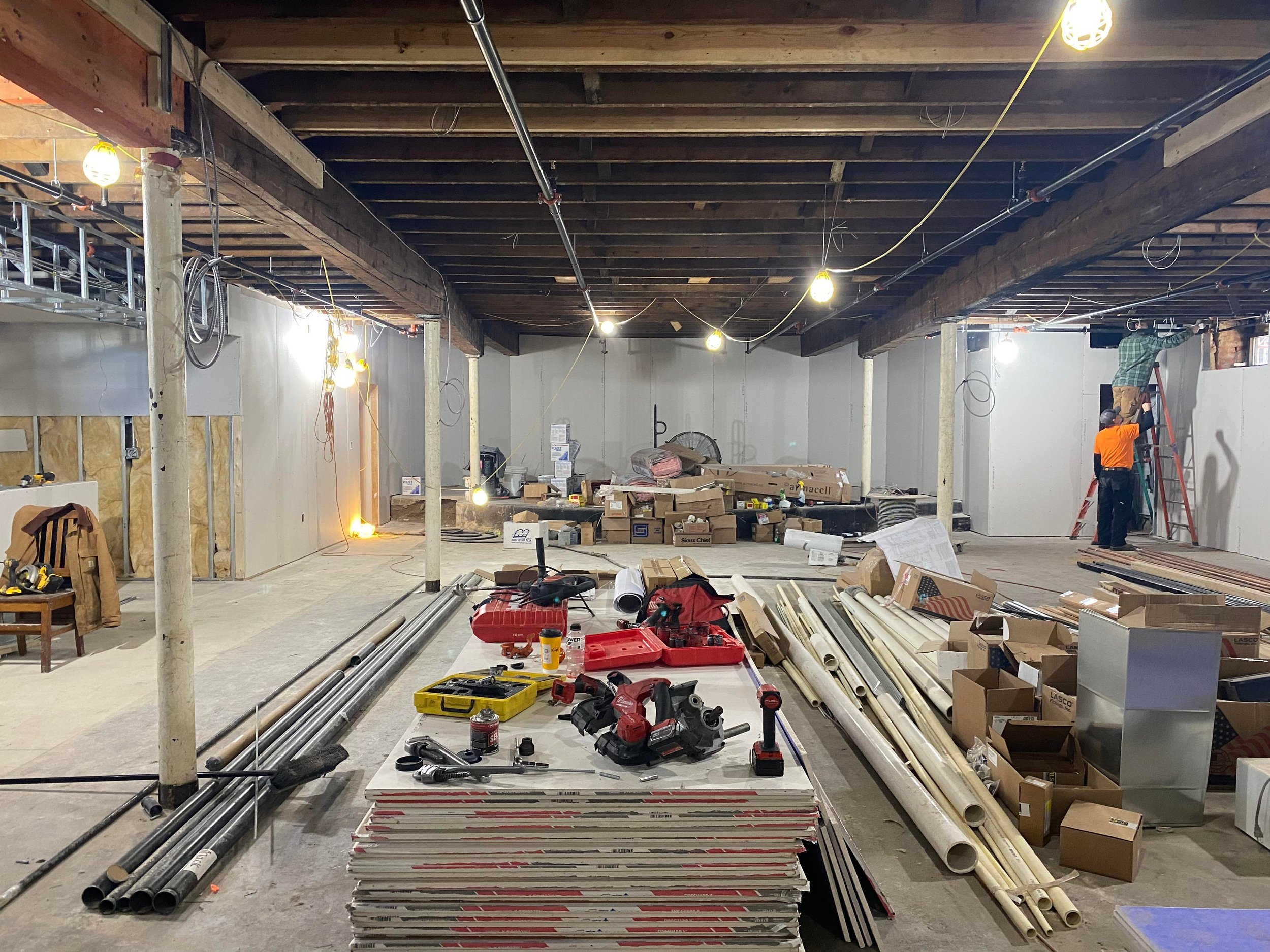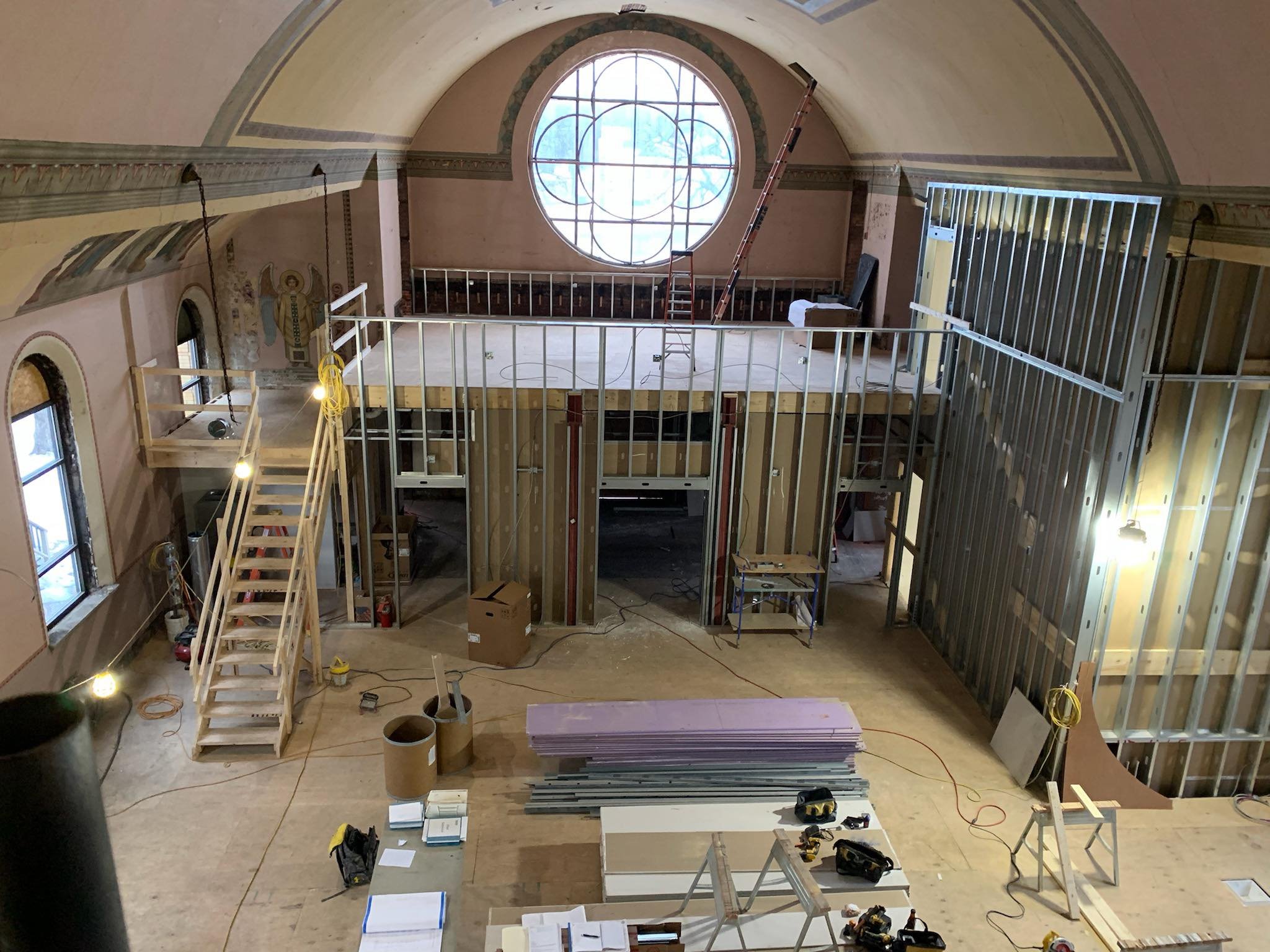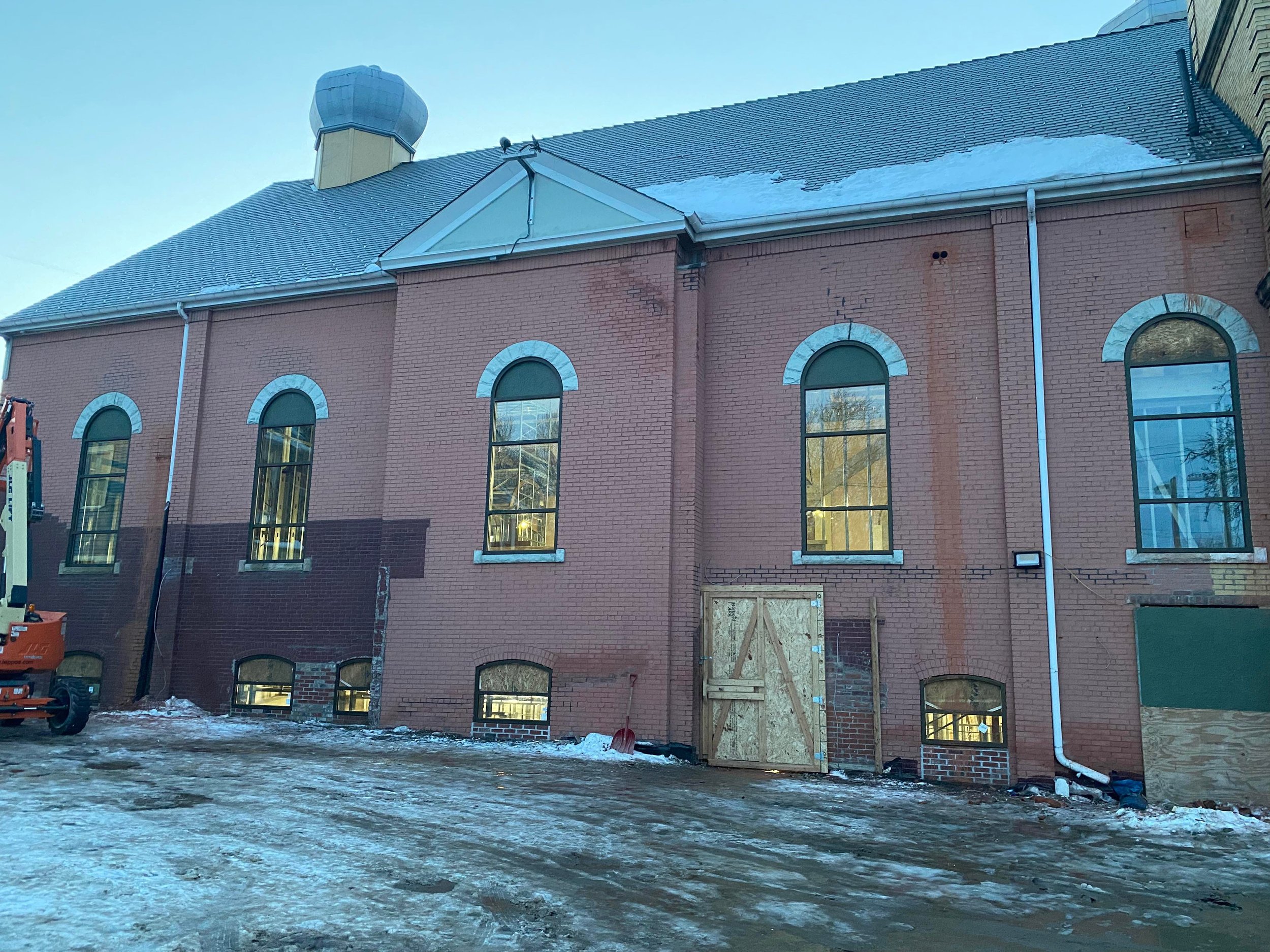
history
holy ghost byzantine catholic church
Receiving its charter by the state of Ohio on October 8, 1909, the Holy Ghost Byzantine Catholic Church opened in 1910 in Cleveland’s Tremont neighborhood to serve Rusyn immigrants. The parish quickly grew and by 1938 the church served nearly 900 families.
Designed by architects M. E. Wells and Joseph Duvalosky, the church was built for $15,000. Reflecting its dual religious heritage, the church blends features of both Byzantine- and Romanesque-style architecture.
The church closed its doors in 2009, later reopened by Bishop John Kudrick as the Byzantine Catholic Cultural Center, and closed for good in 2015. After 7 vacant years, The Elliot is bringing this once vibrant building back to life to serve as a secular event venue for weddings, corporate events, community gatherings, and the like.
Designed & Glazed by Dan Seese of Whitney Stained Glass Studio, Inc. 5/2022
the rose window
The center Rose Window (new portion) is 7’ in diameter. Dan’s bench had to be enlarged to incorporate the window. At times while glazing he had to climb up on the bench to work on the center. Every joint of the lead came had to be soldered with a 60-40 solder, then the window was sandwiched between plywood and carefully flipped by four people and then the other side is soldered. This process was repeated when the window was cemented (glazier’s putty) on both sides. Cementing is the main waterproofing of the window and also helps keep the glass from rattling. It also helps support the window but remains flexible for the expansion and contraction of the window.
Estimated 800 pieces of glass were used for the new rose portion and all the pieces were cut by hand.
Although some glass was cathedral glass, most of the glass was opalescent glass form Kokomo Opalescent Glass Co., Kokomo, IN. www.kog.com “Founded in 1888, KOG is the oldest producer of hand cast, cathedral, and opalescent glass in the United States. Proudly based in Kokomo, Indiana, KOG is known worldwide for our high-quality, hand-mixed sheet glass.”
Some of the glass was silver stained: a process where silver compounds are painted on the glass and then fired at a special temperature to make the stain permanent. Silver stain was discovered in the early 14th century. It is composed of silver nitrate (or chloride, sulfate, or oxide) and gamboge gum, and comes in various colors, from pale yellow to a rich, orangey amber. Because the silver nitrate is clear, the gamboge or clay is added so you can see the application, and then is washed off after the firing, with the silver staining remaining. It differs from paint and enamels because during firing a chemical process takes place in which the stain becomes part of the molecular structure of the glass, rather than adhering to the surface.
